Crunches
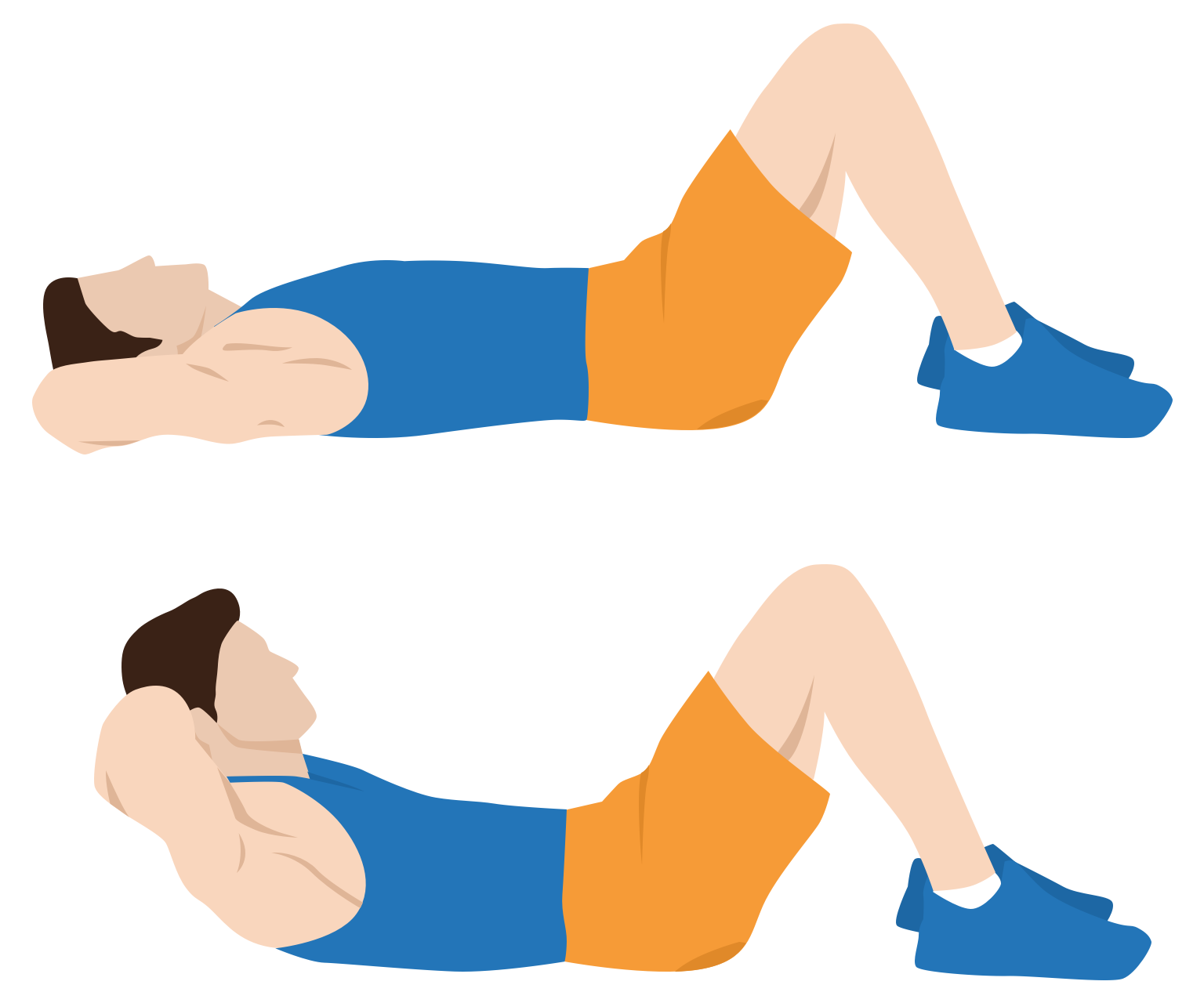
While some abs exercises, like sit-ups, engage your entire core, abs crunches specifically target your upper abs. This makes crunches an excellent choice for sculpting the upper part of your abs.
Crunches can help you improve your core strength, which is essential for core balance and stability. A strong core can help with your functional fitness and reduce the risk of back pain or injuries.
How to do
- Lie flat on your back with your knees bent. Your feet should be flat on the floor.
- Place your hands behind your head, but avoid pulling on your neck.
- Lift your upper body towards your knees by engaging your core. Ensure your lower back stays on the floor.
- Finally, slowly lower back to the starting position.
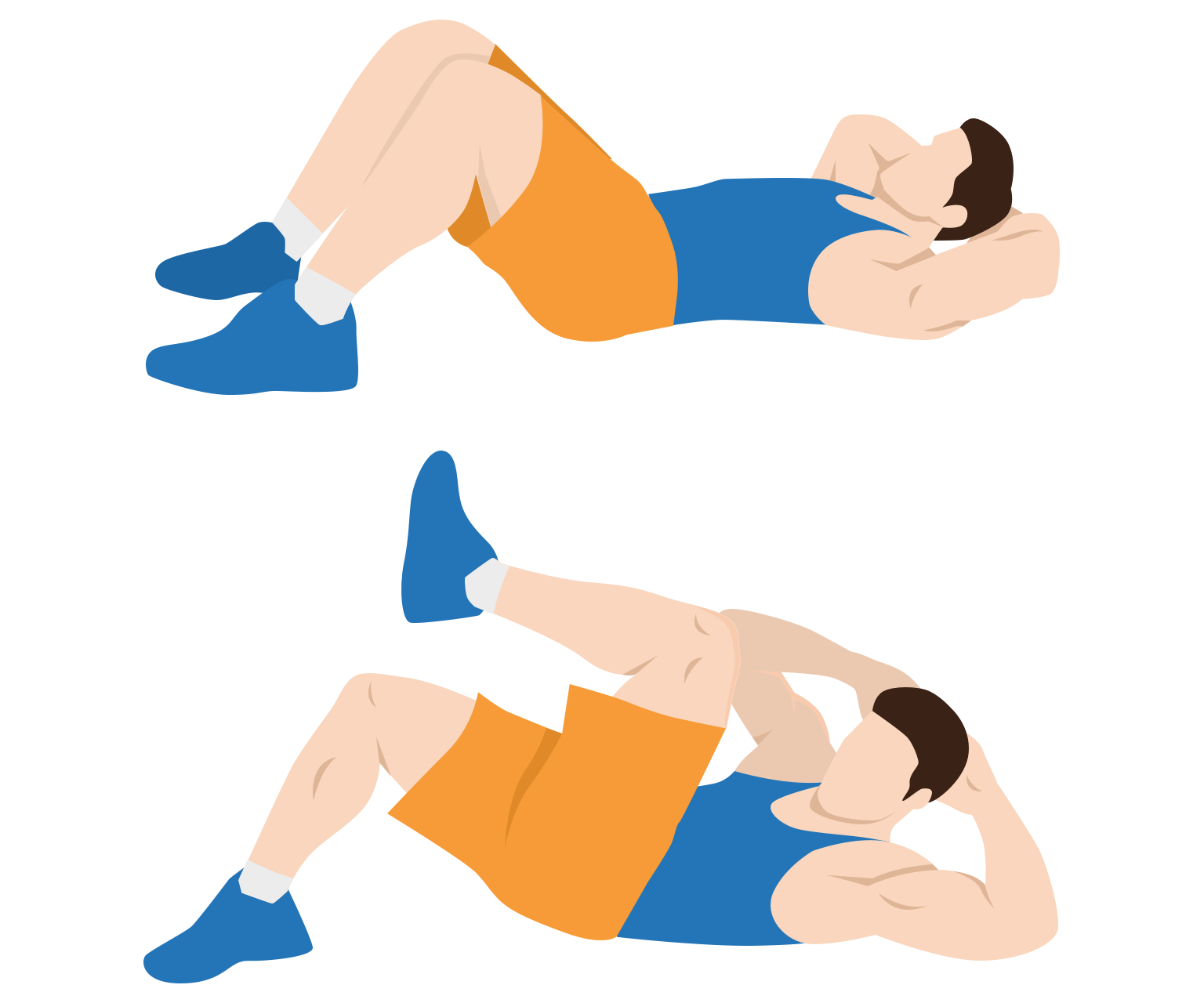
Bicycle crunches also engage multiple areas of your core. The twisting motion makes the exercise challenging and will really get your heart pumping! Like the Russian Twist, this exercise engages your obliques as well as your abs.
How to do
- Lie flat on your back on an exercise mat.
- Place your hands behind your head, and bend your knees.
- Lift both legs off the ground and keep them elevated through the exercise.
- Bring one knee to your chest while keeping the other straight.
- At the same time, twist your torso and touch your opposite elbow to your raised knee.
- Now immediately repeat for your other knee, as if to create a "cycling motion".
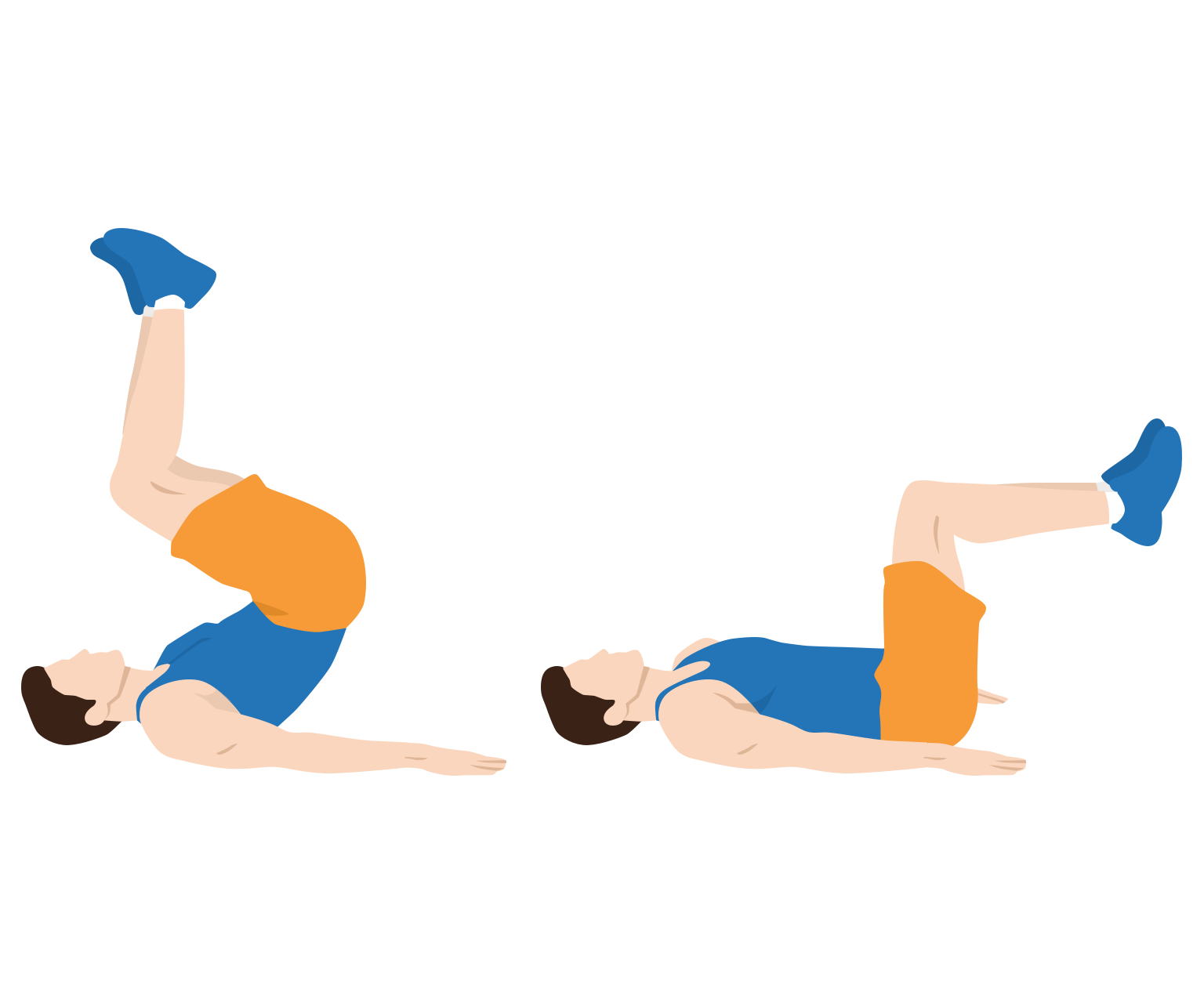
Unlike traditional crunches that work your upper abs, reverse crunches specifically target your lower abs. The exercise sees you lie with your upper back flat on the ground. You then lift your hips off the ground, rather than lifting your head and shoulders up.
How to do
- Lie flat on your back on an exercise mat. Place your arms on the floor by your sides.
- Bend your knees and lift your legs so your thighs are perpendicular to the floor. Your shins should be parallel with the floor.
- Engage your abs, then curl your hips off the floor, bringing your knees as close to your chest as possible.
- Now, slowly lower your legs back to the starting position. Keep your feet elevated throughout the exercise.
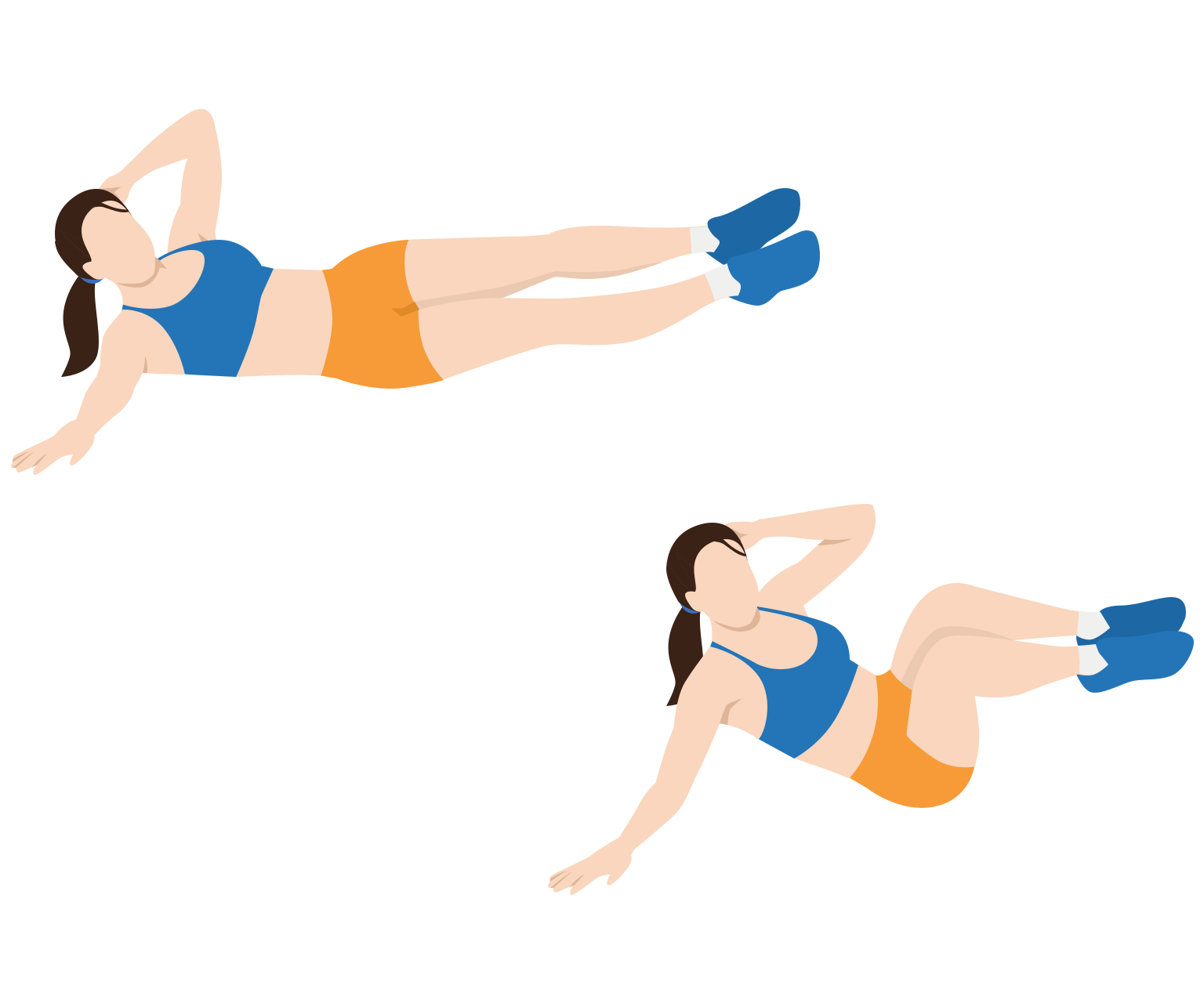
Unlike traditional crunches that prioritize your rectus abdominis, the oblique crunch targets the sides of your abdomen, making it a great workout for your obliques. This exercise can strengthen and tone your obliques and overall core. It can also help sculpt a more defined waistline.
How to do
- Lie on your side with your feet stacked one atop the other. The arm closest to the floor should be extended out in front of you to support your body.
- With your other arm, place your hand behind your neck.
- Raise your legs off the ground and keep them elevated throughout the exercise.
- Engaging your core, lift your torso up while at the same time pulling your knees close to your chest.
- Hold the position for a second or two, then return back to the starting position, ensuring you keep your feet raised.
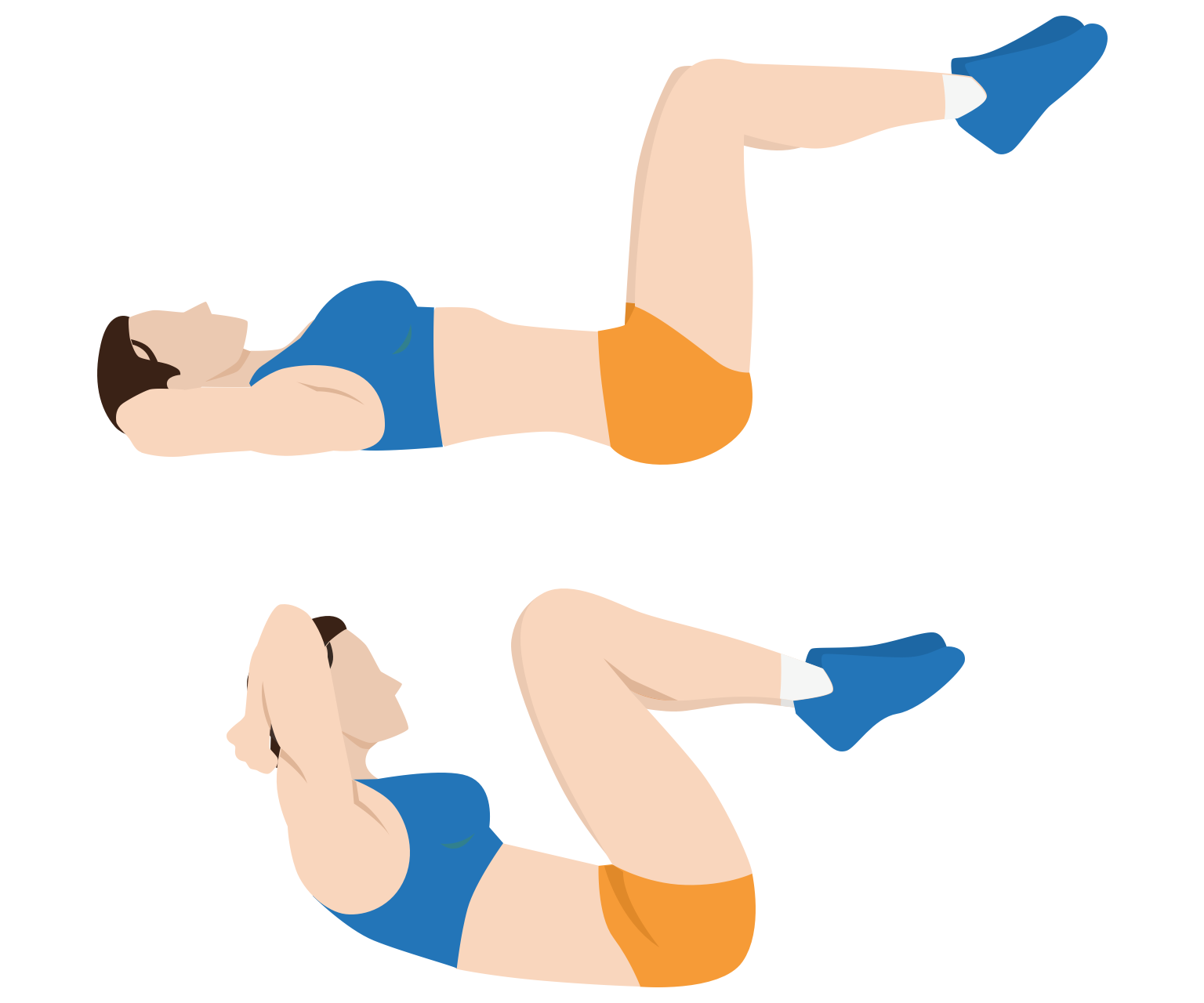
Frog crunches involve a leg movement resembling a frog's kick. This adds an extra challenge to the exercise, making your core work harder to maintain stability. The unique positioning of the legs during frog crunches can help reduce strain on your lower back, which can be a common issue with other abs exercises.
How to do
- Lie flat on your back on a exercise mat. Place your hands behind your head, with your elbows wide open.
- Bend your knees and bring your feet together so your soles are touching. This is the "frog" position.
- Engaging your core, lift your head and shoulders off the floor, bringing your chest towards your legs.
- Hold for a second, then lower back down with control.
- Repeat for the desired number of reps.
Twists and obliques
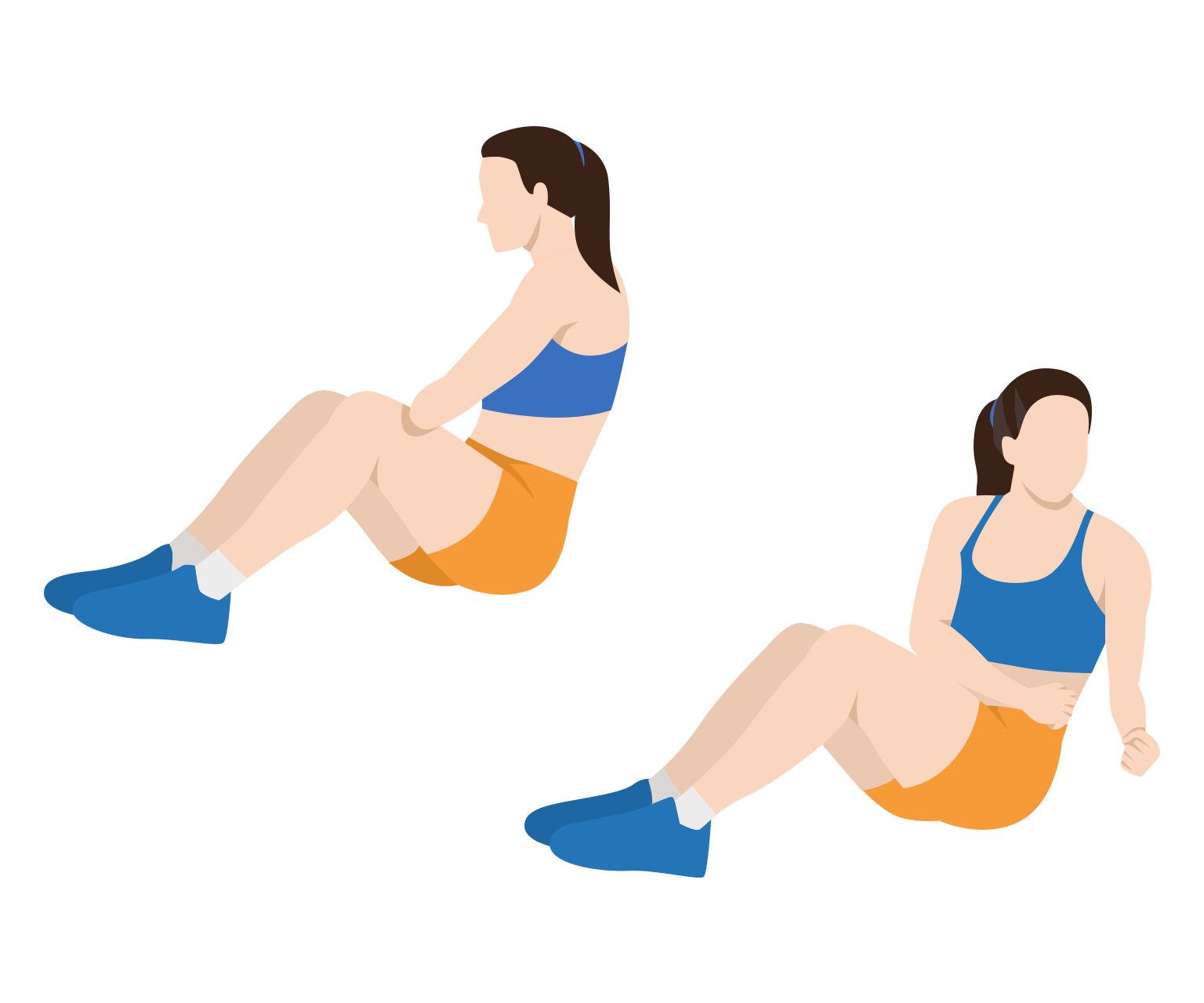
The Russian Twist involves a twisting motion of your torso that works your internal and external obliques. Training your obliques is as important as training your abs.
Strong obliques help with your posture and reduce your risk of back injuries. They can also improve your performance in everyday activities and sports, like tennis, golf or dancing.
How to do
- Sit on the ground with your knees bent.
- Lean back a few inches while keeping your back straight.
- Lift your feet slightly off the ground and keep them elevated throughout the exercise.
- With your hands clasped in front of your chest, twist your torso to the right. Try to touch the ground with your elbow.
- Now, twist back over to your left.
- Repeat for the desired number of reps.
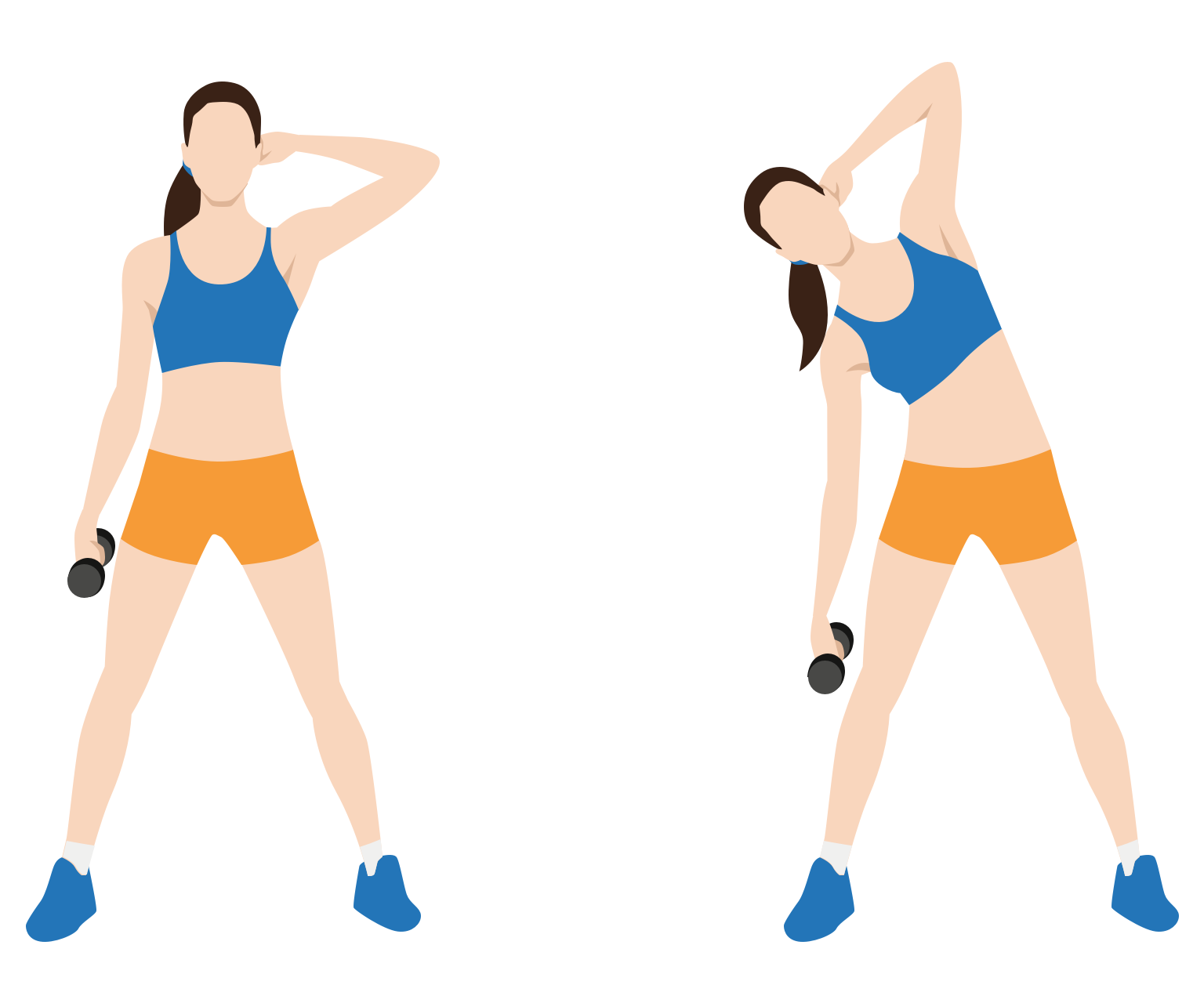
The dumbbell side bend targets your obliques in a very focused way. These are the muscles located on the sides of your abdomen.
How to do
- Stand upright with your feet wider than shoulder-width apart. Hold a dumbbell in one hand.
- Bend your waist to the side holding the dumbbell. Go as far as you can, keeping your back straight and your chest up.
- Focus on using your obliques to pull your torso back up to the starting position.
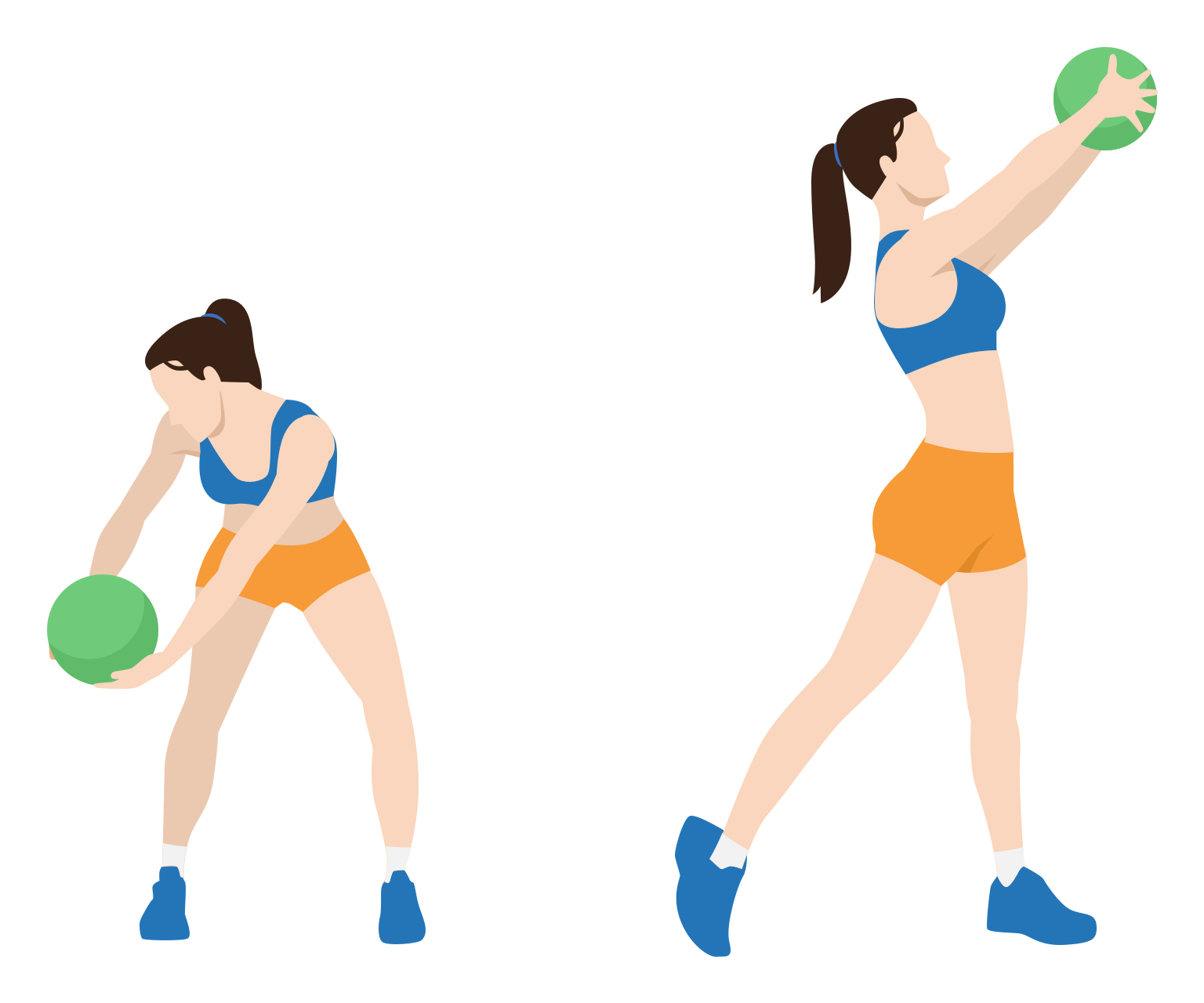
The Wood Chop targets your obliques, which critical muscles for rotational movements and core strength and stability. It's a functional exercise, mimicking the "wood chopping movement", meaning it improves your perform in everyday activities.
How to do
- Stand with your feet wider than shoulder-width apart. Hold a medicine ball with both your hands.
- To start, position the weight to the right of your hip, rotating your torso slightly.
- In one fluid motion, twist your torso to the left and lift the weight diagonally across your body. The movement ends when the weight is above your left shoulder.
- Your feet should pivot in the movement, raising your heel off the ground at the peak of the motion.
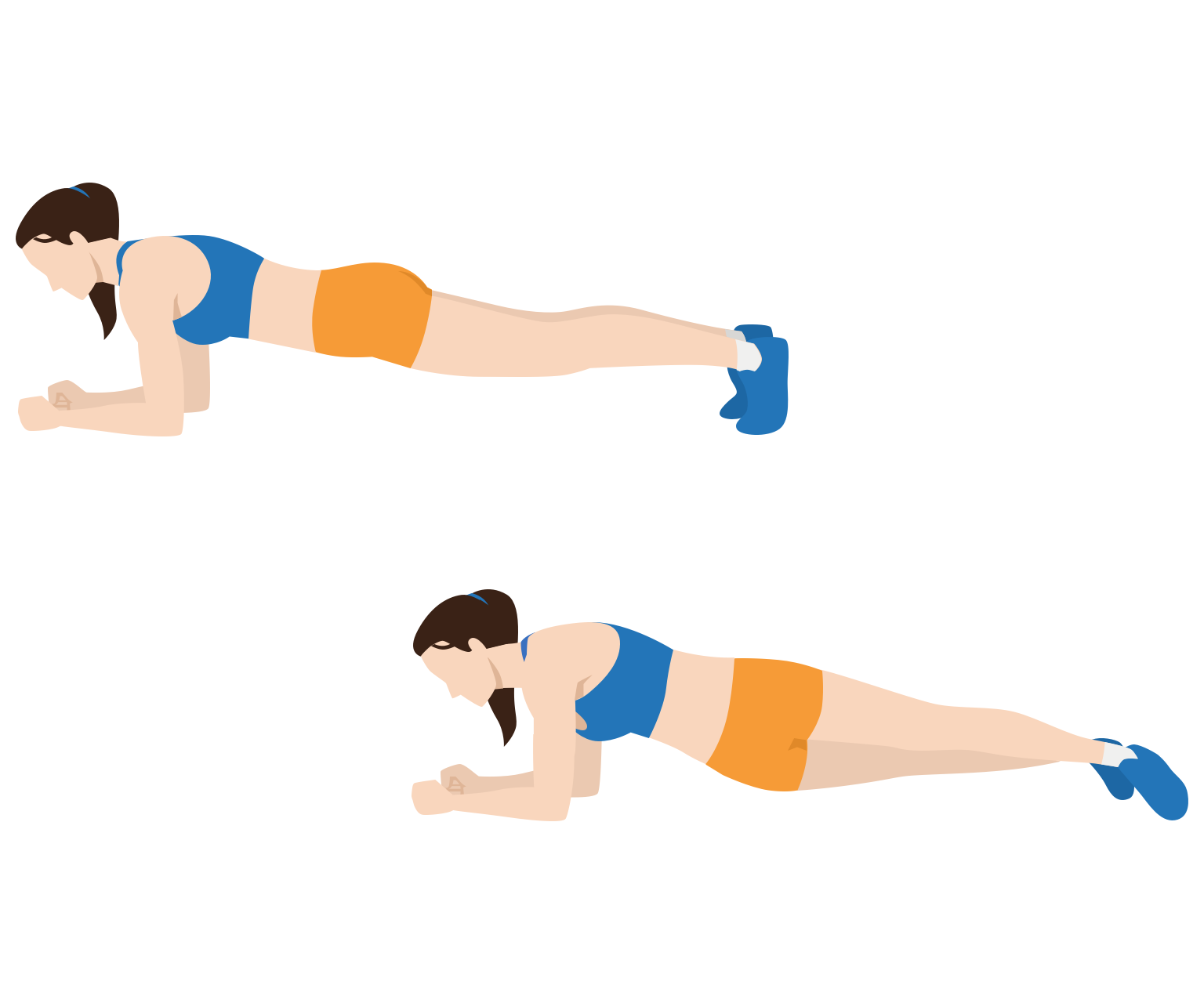
The Plan Hip Dip adds a rotational element to the plank, seeing you start from the plank position then dip your hips to the ground by rotating them. The rotational movement in this exercise specifically targets and strengthens your obliques.
How to do
- Start in a plank position, resting on your forearms. Your elbows should be directly under your shoulders, and your feet should be hip-width apart.
- Slowly rotate your hips to the right and dip your body almost to the ground.
- Return to the center, then rotate your hips to the left and dip again.
- Repeat for the desired number of reps.
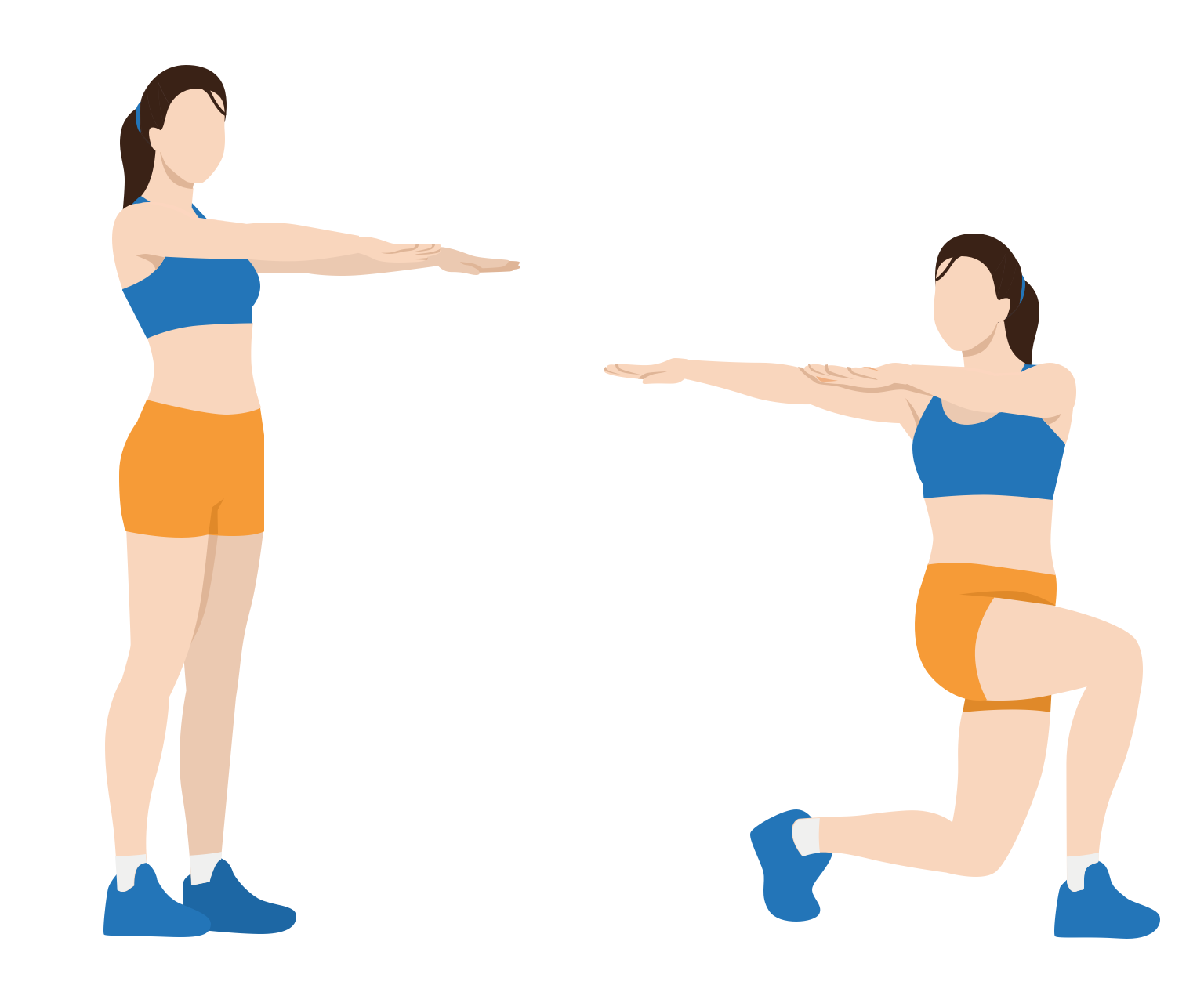
Lunge twists add a rotational element to the traditional lunge that brings your core and obliques into play. This twist makes the exercise more challenging.
The lunge twist is a great exercise to improve your lower body strength, enhance your core stability as well as improve your torso's rotational mobility. This is beneficial for various sports and everyday activities.
How to do
- Stand with your feet hip-width apart.
- Take a step forwards with your right foot and lower into a lunge. Keep your front knee aligned with your ankle.
- As you descend, twist your torso to the right.
- At the same time, extend your arms out to your sides to maintain balance. Keep your spine straight and your core engaged.
- Twist back to the neutral position, as you push off your right foot to return to the starting position.
- Repeat for the other side and the desired number of reps.
Planks and static holds
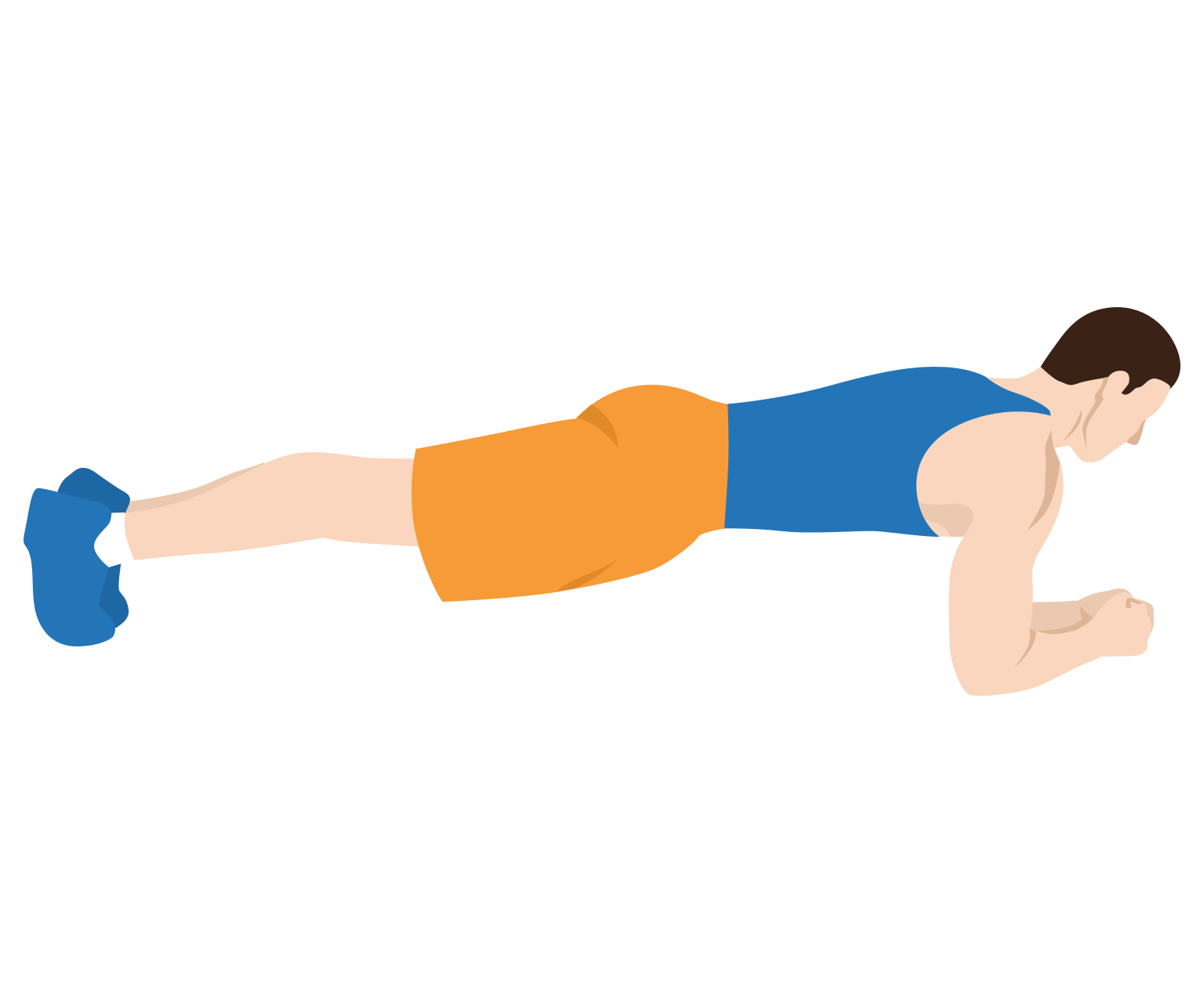
Unlike other abs exercises that involve a dynamic movement, like crunches or sit-ups, planks are an isometric exercise. That means you simply hold the same position for between 30 seconds and 2 minutes, and potentially longer.
The static hold nature of the plank engages multiple muscle groups simultaneously and improves your overall stability and posture.
How to do
- Start in the push-up position on the floor.
- Bent your elbows 90 degrees and rest your body weight on your forearms. Your elbows should be beneath your shoulders, with your body forming a straight line from head to toe.
- Hold the position for as long as you can, ideally at least 30 seconds.
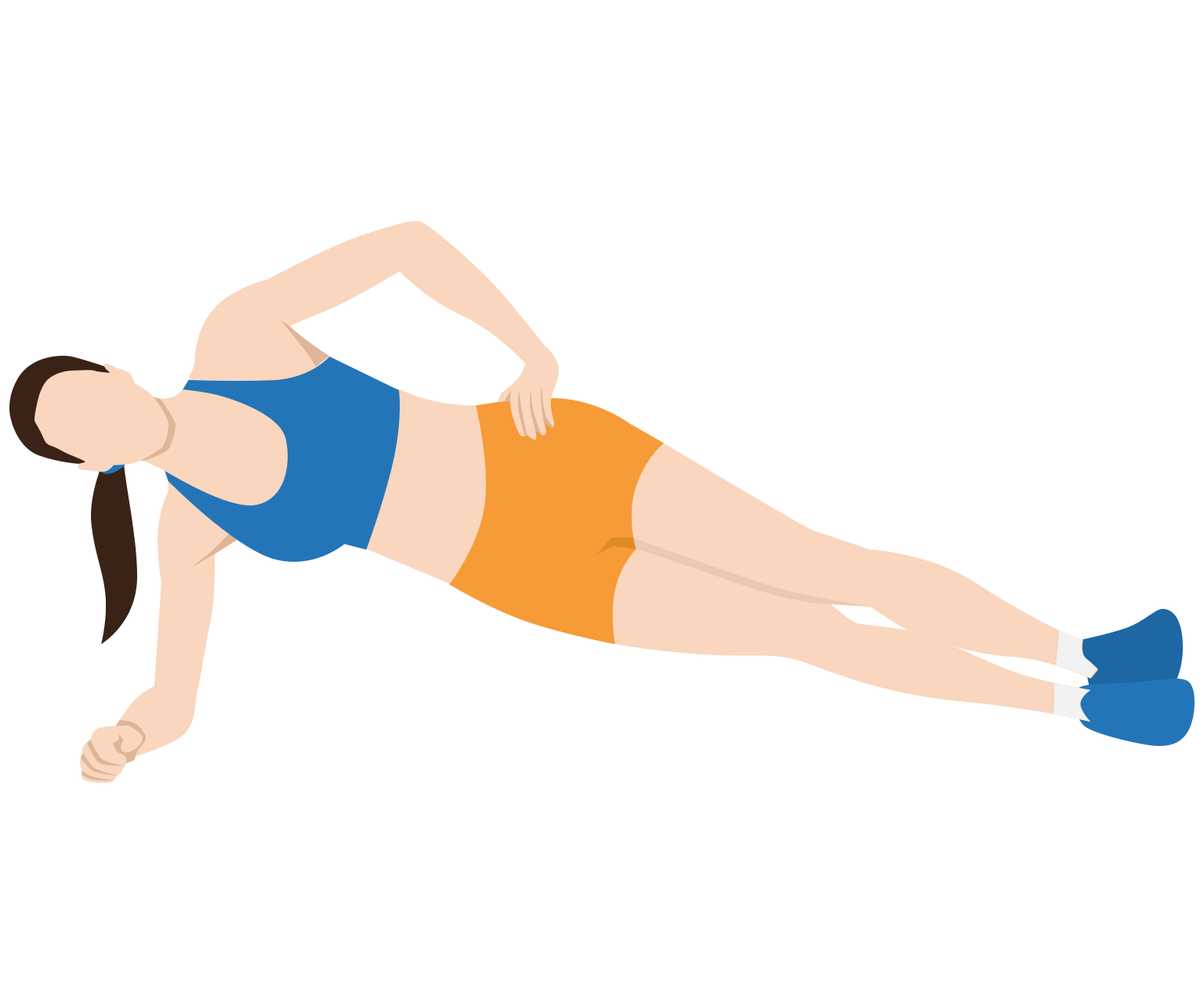
The side plank puts more emphasis on your obliques, unlike most abs exercises that focus on your rectus abdominis (the "six pack" muscle). It's a great exercise to pair with other abs exercises to provide a comprehensive workout.
How to do
- Lie on your side with your feet stacked one atop the other. Your forearm should be below your shoulder, keeping your shoulders elevated.
- Engaging your core, raise your hips up until your body forms a straight line from head to toe.
- Hold the position for at least 15-30 seconds, depending on experience.
- Repeat for the desired number of reps. Remember to workout both sides of your core equally for balanced development.
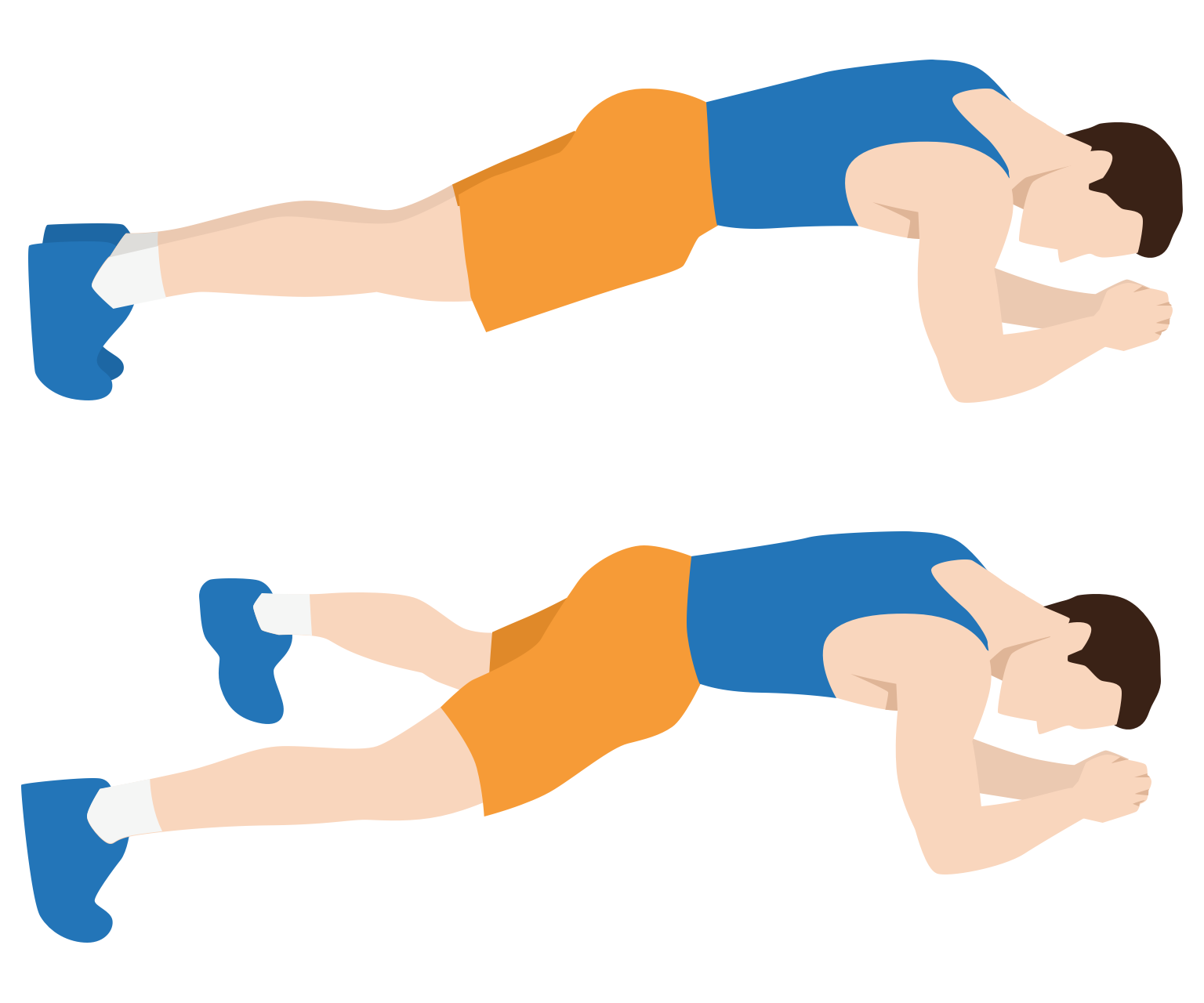
Plank jacks start in the plank position, but involves a jump out to the sides with your legs. This makes the plank jack more of a cardio exercise, bringing the benefit of burning more calories and improving your cardiovascular health.
This exercise is excellent for improving core strength and stability, enhancing cardiovascular endurance, and promoting better balance and coordination. Additionally, it's a great exercise for burning calories and can be included in high-intensity interval training (HIIT) workouts.
How to do
- Start in a plank position. Your elbows should be below on your shoulders, with you resting on your forearms.
- Jump your feet out wide as if doing a horizontal jumping jack. Immediately, jump your feet back in.
- Keep your core engaged and your back flat throughout the exercise.
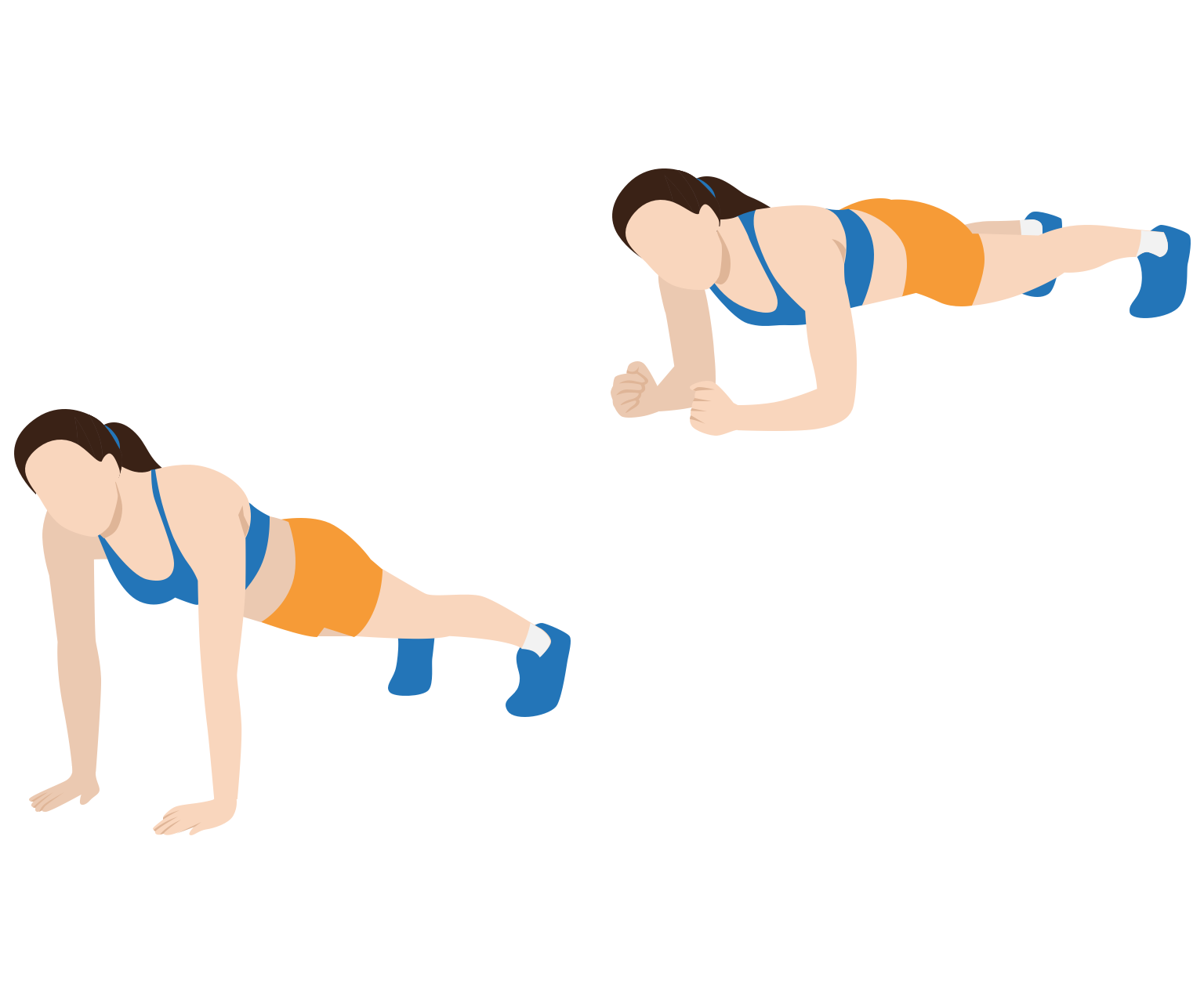
The Up-down Plank is a simple exercise that sees you alternative between a high and low plank.
How to do
- Start in a high plank position. Your hands should be directly below your shoulders, with your feet hip-width apart.
- Lower your right elbow to the mat, followed by your left elbow. This places your body in the low plank position.
- Now reverse the motion to return to the high plank. Alternate the arm you lead with each time.
- Repeat for the desired number of reps.
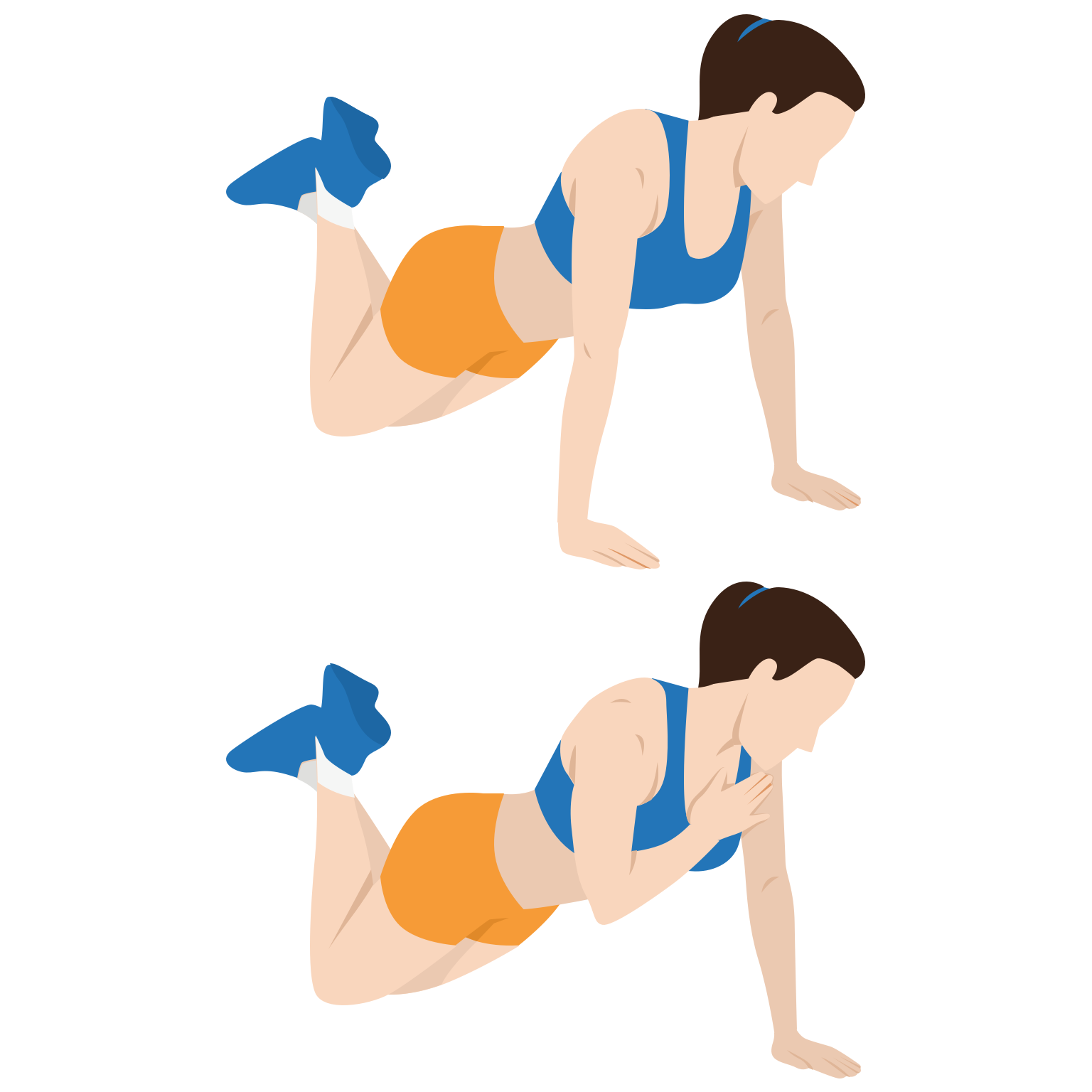
Plank Shoulder Taps provide a comprehensive core workout and also target your obliques and lower back. The addition of the shoulder tap motion introduces an element of instability which challenges your balance and coordination, making it a more functional exercise.
How to do
- Start in a high plank position. Your hands should be directly under your shoulders and your feet should be hip-width apart.
- Slowly lift one hand off the floor and tap the opposite shoulder. Keep your body as stable as possible.
- Now replace your hand back on the floor, then repeat the motion with your other hand.
- Repeat for the desired number of reps.
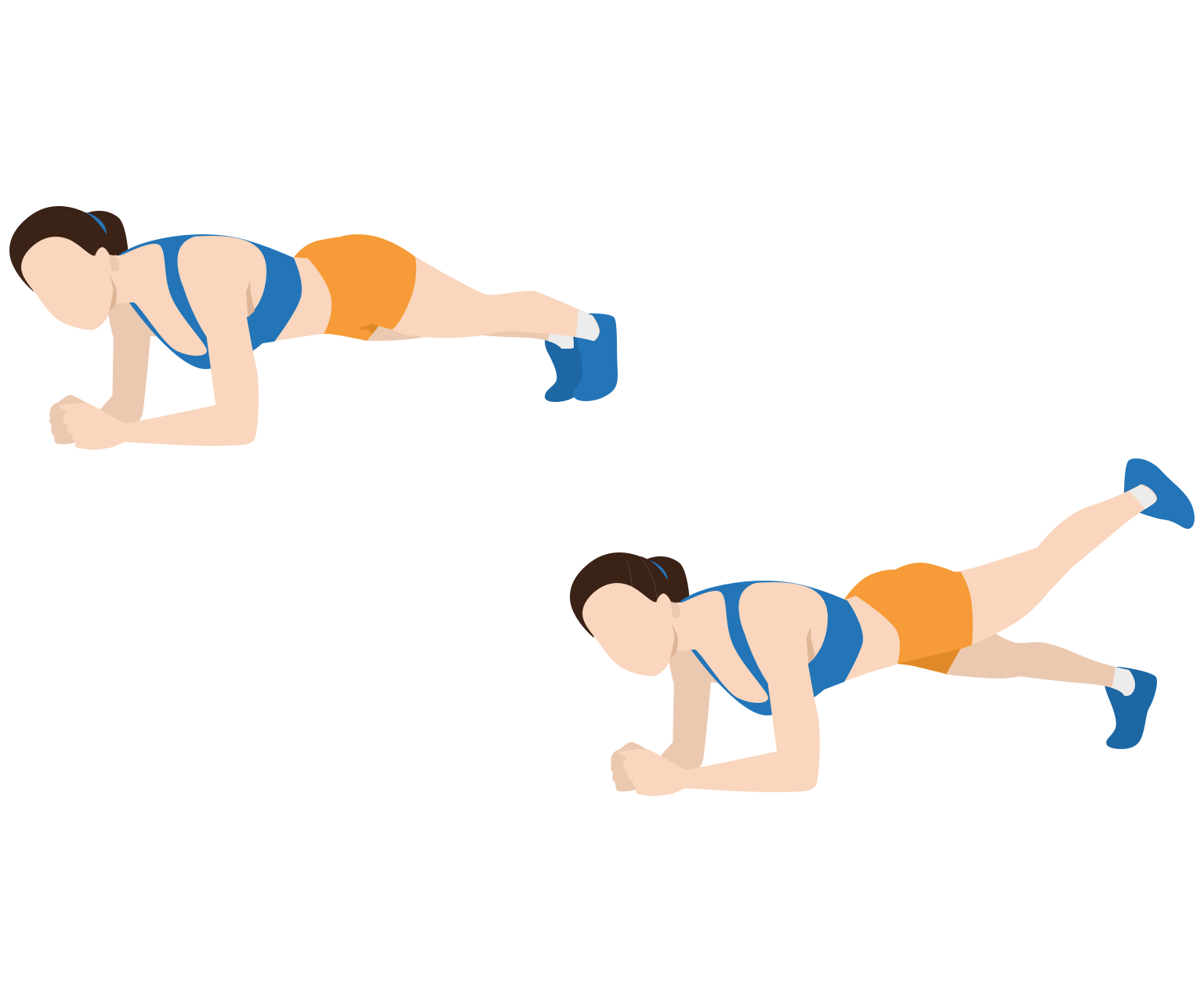
Plank Leg Lifts combine the plank movement with a leg lift. This combination provides a more comprehensive workout by engaging multiple muscle groups at once.
How to do
- Start in a plank position with your forearms on the ground. Your elbows should be directly under your shoulders, and your feet should be hip-width apart.
- Engaging your core, maintain this position and slowly lift one leg off the ground. Keep the leg straight as you lift.
- Raise as high as you can without arching your back.
- Finally, lower back down with control.
- Repeat with your other leg.
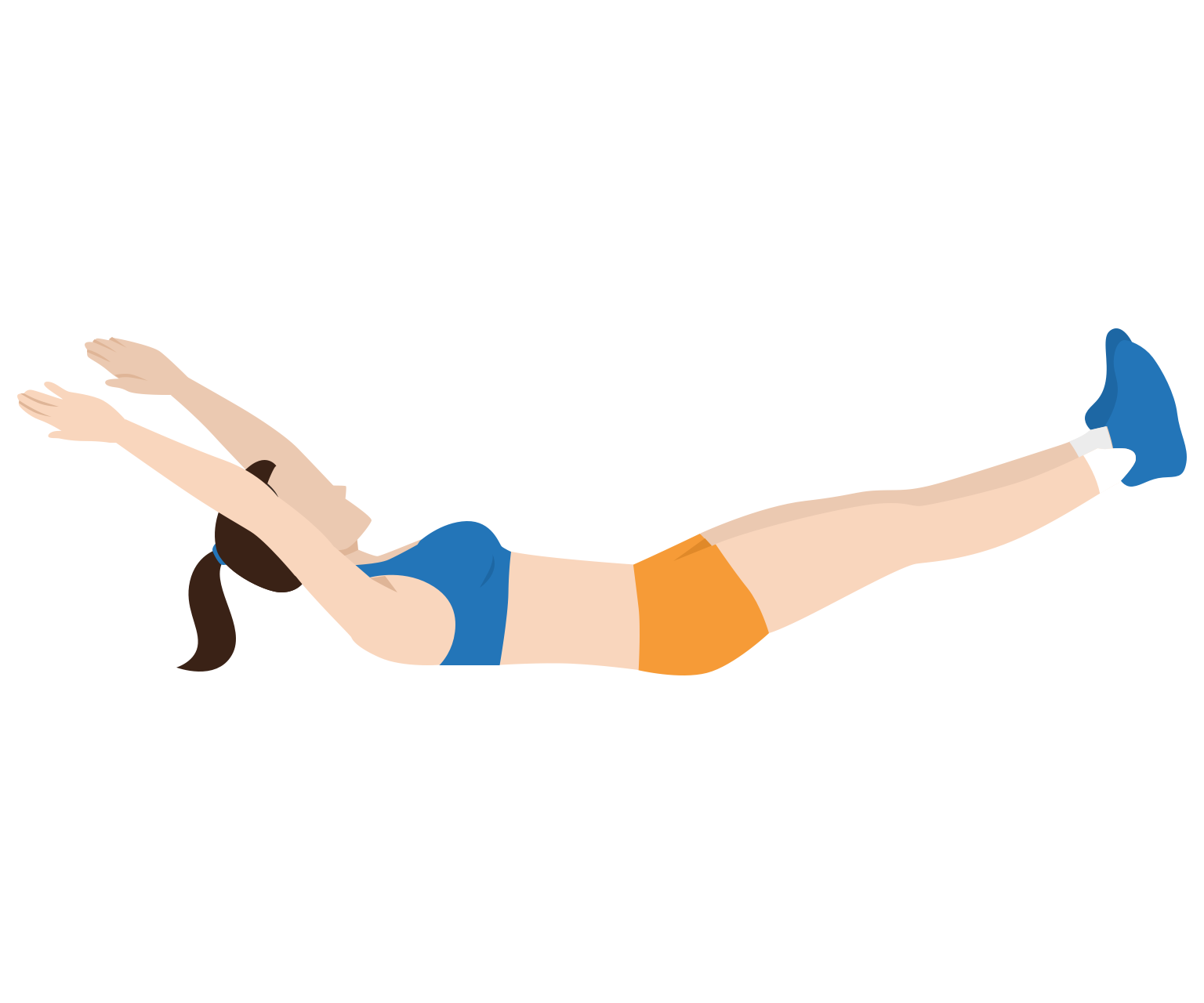
Hollow holds are another isometric exercise, requiring you to engage your core and maintain stability through the entire duration of the hold. This constant tension leads to more core activation which leads to improve muscular endurance and stability.
How to do
- Lie flat on your back on an exercise mat.
- Extend your arms above your head and your legs straight out.
- Lift your shoulders and legs off the ground. Keep your lower back pressed to the floor throughout the exercise.
- Hold this position for up to 30 seconds, keeping your core engaged through the entire duration.
Dynamic exercises
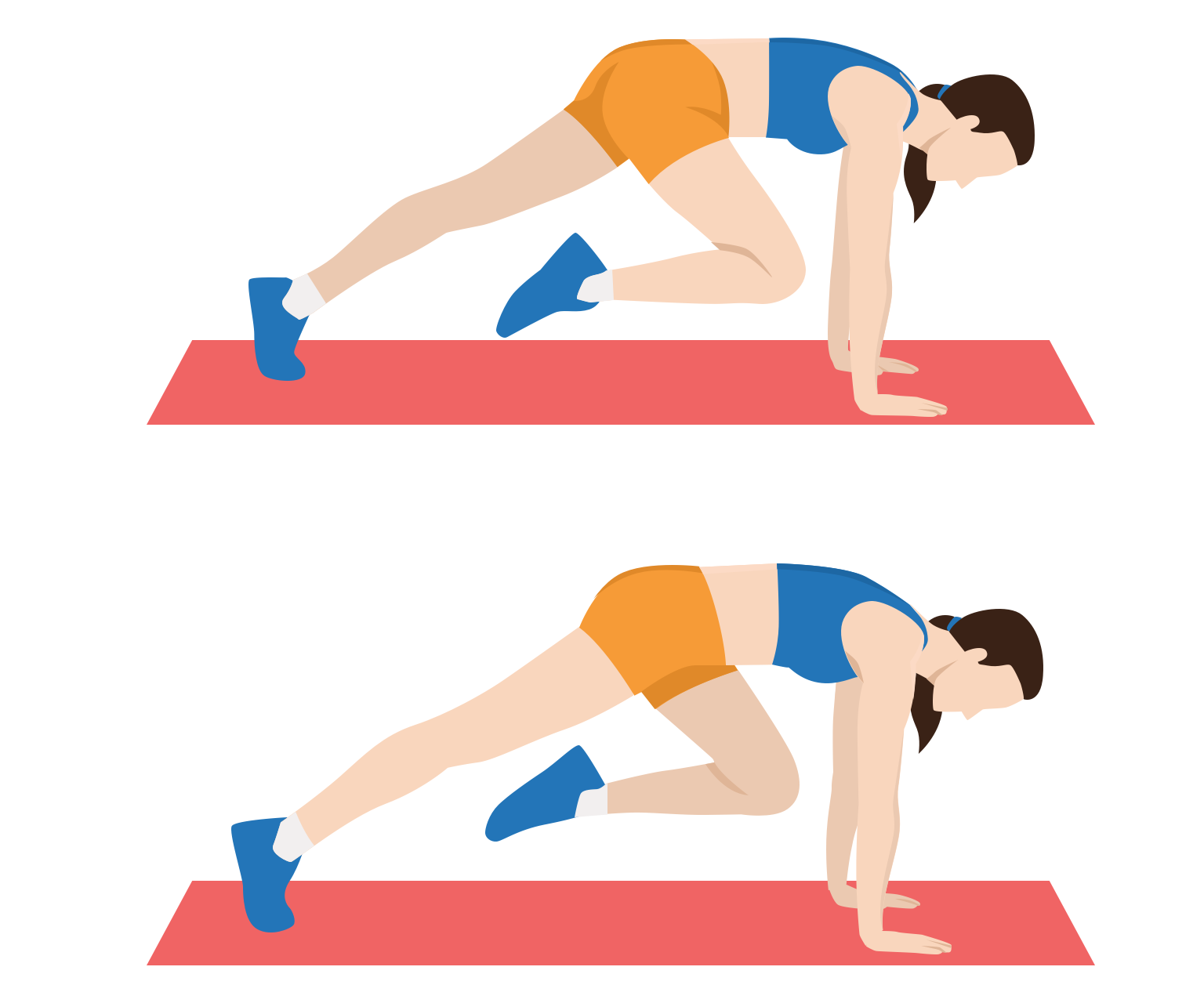
The Mountain Climbers exercise is a dynamic exercise that engages multiple muscle groups at the same time. Unlike traditional abs exercises that isolate your abs and obliques, this exercise benefits your overall strength. It's also an intense workout, so has some cardio benefits. If you follow a HIIT workout, Mountain Climbers is a good exercise to perform.
In addition to your abs and obliques, Mountain Climbers also works your quads and hip flexors.
How to do
- Start in a high plank position. Your hands should be under your shoulders, and your legs should be extended behind you.
- Engage your core and keep your back flat.
- Bring your right knee towards your chest. Avoid lifting your hips or allowing your foot to touch the floor.
- Now return it back to the starting position. At the same time, bring your left knee towards your chest.
- Continue alternating between your left and right legs, moving as quickly as you can.
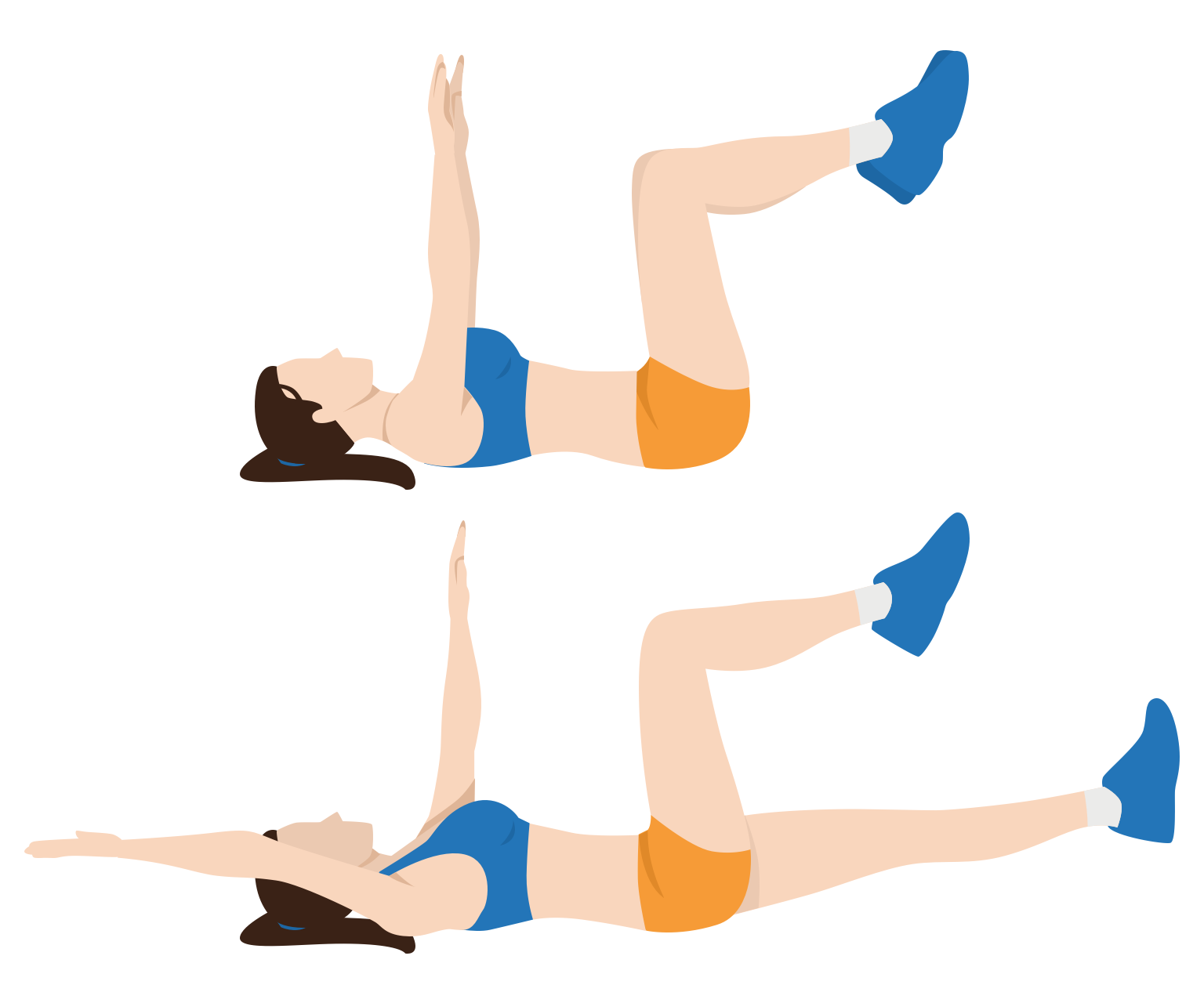
The dead bug sees you lie flat on the ground. So unlike crunches and similar exercises, there's little pressure applied on your spine. This makes is a safer option if you have lower back issues.
The Dead Bug exercise not only strengthens your core but it also enhances your stability, coordination and balance.
How to do
- Lie flat on your back on an exercise mat.
- Extend your arms up to the ceiling and raise your legs with your knees bent at a 90 degree angle.
- Slowly extend your right arm behind your head and extend your left leg out straight. Keep your arm and leg above the ground.
- Now, bring your arm and leg back to the starting position.
- Repeat for your left arm and right leg.

The Burpee is a full body workout that engages multiple muscle groups at the same time. Although the burpee is a great abs exercise, it also works muscles in your legs and arms, too. Because it's a high intensity move, it's also good for your cardiovascular health.
Burpees don't need any equipment, so it's a good exercise for at-home workouts or when you can't get to a gym.
How to do
- Start in a standing position.
- Bend your knees and place your hands on the floor in front of you.
- Jump your feet back into a plank position.
- In this position, perform a push-up, keeping your body in a straight line from head to heels.
- Jump your feet back towards your hands, then immediately jump explosively up into the air.
- As you jump, reach your hands above your head.
- Land back into the starting position, transition back into the bent position to start another burpee.
- Repeat for the desired number of reps.
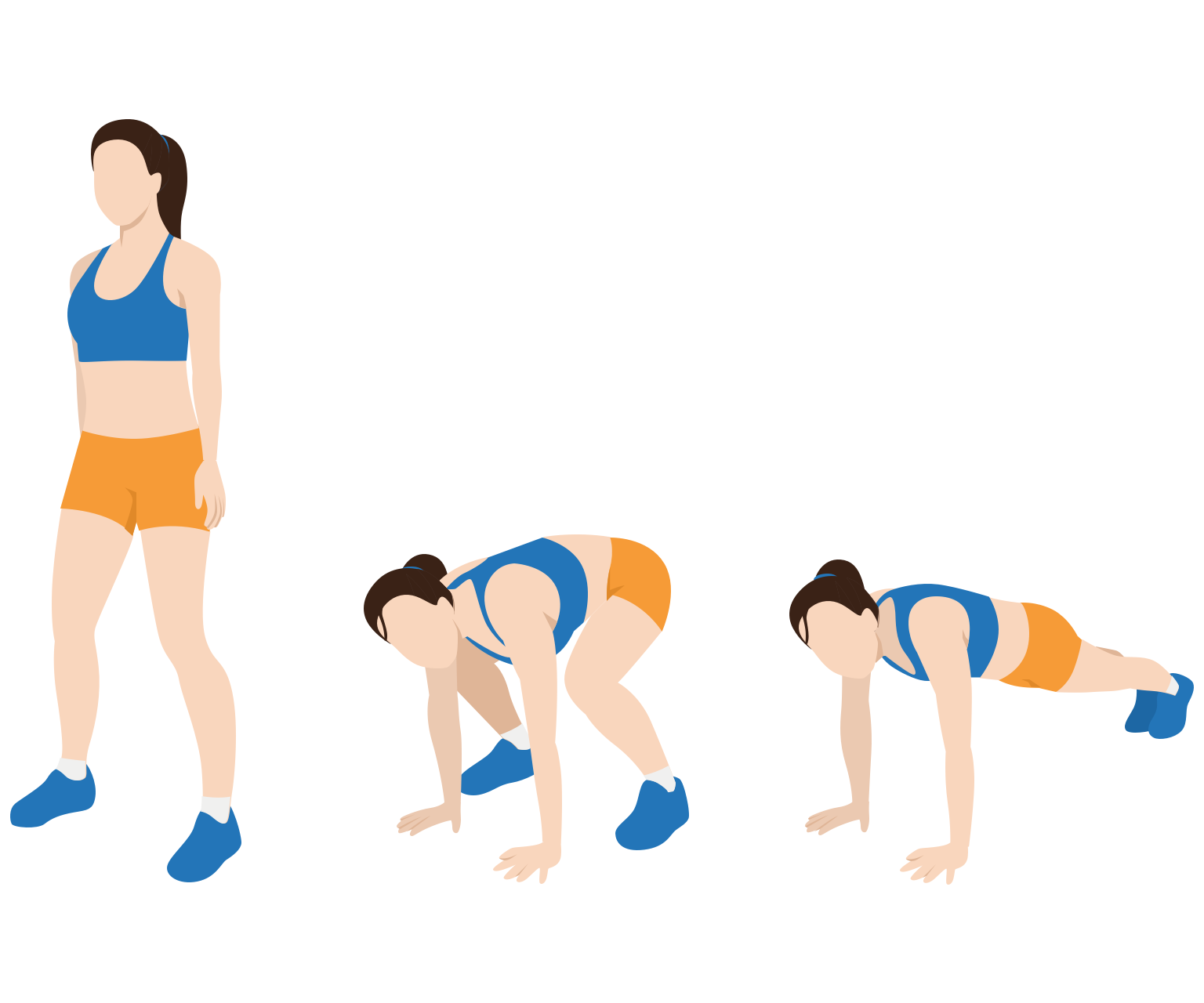
The squat trust is a full body exercise that primarily targets the muscles in your lower body, such as your glutes, quads and hamstrings. But it also works your core muscles, too.
Being a dynamic, high-intensity exercise, the squat trust increases your heart rate for a cardio effect, something that many purely abs exercises don't provide.
How to do
- Stand with your feet hip-width apart.
- Bent your knees and reach forward to place your hands on the ground.
- Kick your feet back into the plank position, keeping your hands directly under your shoulders. Your body should form a straight line from head to toe.
- Now, jump your feet back towards your hands to return to the standing position.
- Repeat for the desired number of reps.
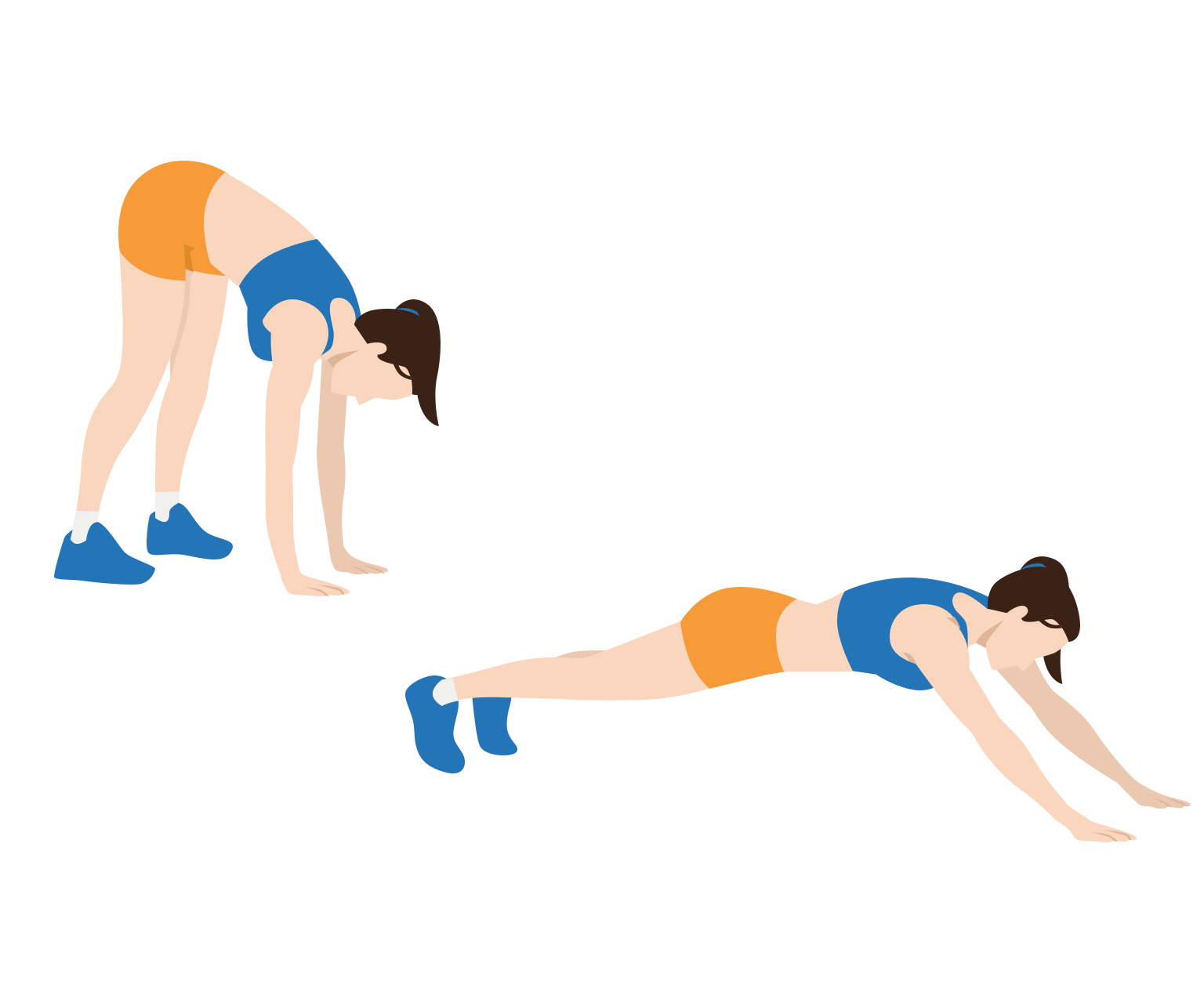
While traditional abs exercises like crunches and sit-ups focus on your rectus abdominis, the inchworm engages multiple muscle groups at once. This makes it a more comprehensive exercise, providing both strength and cardio benefits.
How to do
- Stand tall with your feet hip-width apart.
- Bend at your waist and touch the floor with your plams.
- Walk your hands forward until your reach the high plank position. Your body should form a straight line from head to heels.
- Finally, walk your feet towards your hands, keeping your legs as straight as possible.

The Spiderman Plank is a less intense variation of Mountain Climbers. It not only strengthens your core but also improves your balance and stability.
How to do
- Start in the standard plank position. Your body should be straight from head to heels.
- Bring one knee up to your elbow, mimicking the climbing motion of the Mountain Climbers exercise.
- Return your foot back to the starting position, then repeat with your other knee.
- Unlike Mountain Climbers, keep your movements slow and controlled to get the maximum benefit.
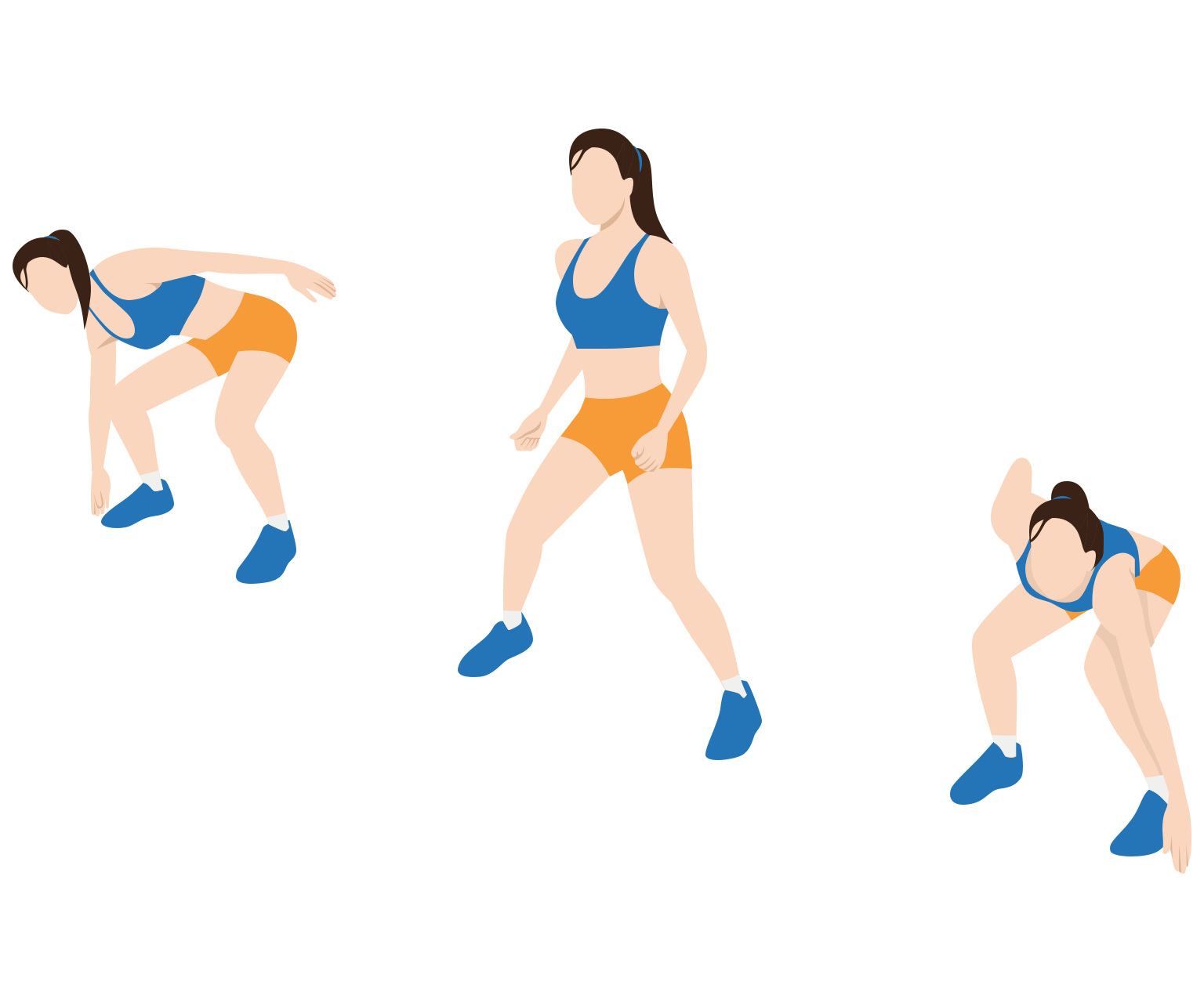
The Side Shuffle is a high-intensity compound exercise that targets multiple muscle groups. You perform this exercise in a half squat position, shifting your torso from left to right as you reach for your toes.
How to do
- Stand up with your feet hip-width apart.
- Bent your knees slightly and get into the half squat position.
- While maintaining the squat, take a few steps to the right and reach for your toes.
- Then, quickly shuffle to your left the same number of steps and reach for your toes.
- Stay low and move quickly throughout the exercise.
Lower abs

Flutter kicks sees you lie flat and rapidly move your legs up and down in an alternating fashion. They engage your lower abs, as well as your hip flexors and obliques to some extent.
How to do
- Lie flat on your back on an exercise mat. Your arms should be by your sides, with your palms facing down.
- Extend your legs out and lift your heels about 6 inches off the floor.
- Make small and rapid movements up and down with your legs. Focus on engaging your abs through this movement.
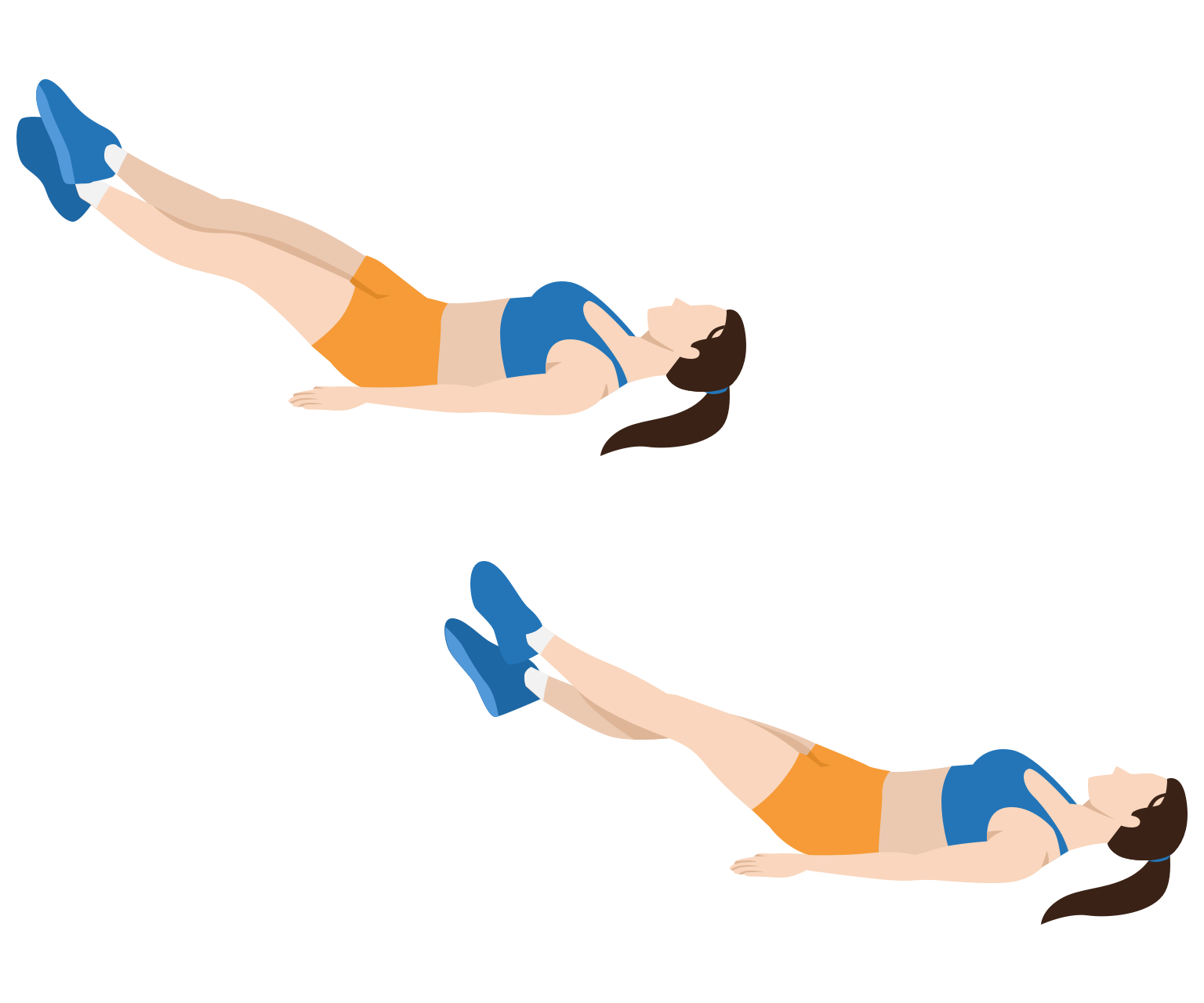
Scissor kicks also work your lower abs, but provide an additional challenge to your hip flexors. It sees you move your legs laterally as well as simply up and down. This exercise involves a continuous movement, which increases the time under tension for your abs and core, leading to increased strength and endurance.
How to do
- Lie flat on your back on an exercise mat. Your arms should be by your sides, with your palms facing down.
- Lift both legs off the ground at a 45 degree angle, keeping your lower back firmly on the mat.
- Engaging your core, move your legs in a scissor-like motion, one going up as the other goes down.
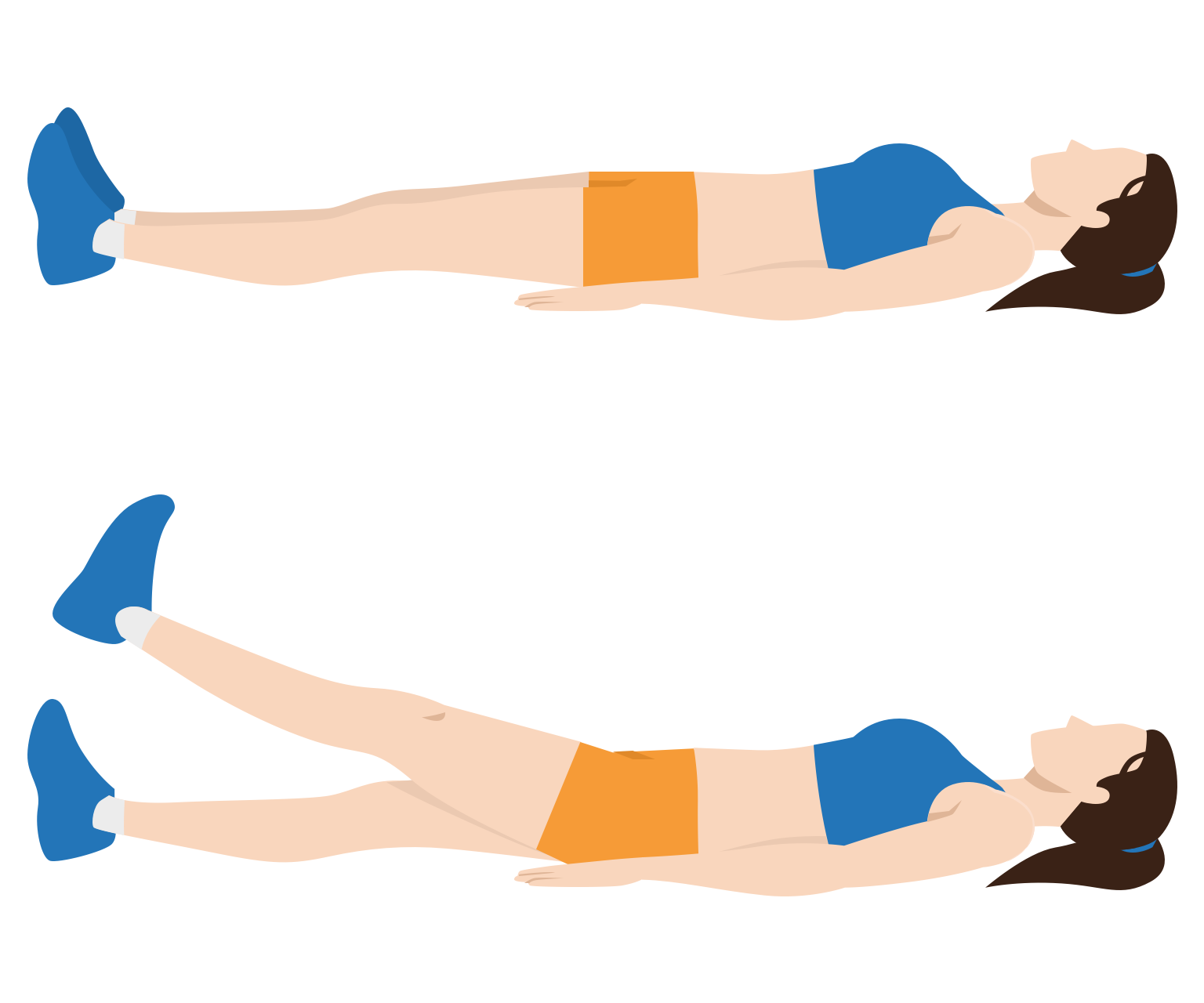
The straight leg raise is a great exercise to target the often-neglected lower abs. It also engages your hip flexors more directly than conventional abs exercises.
How to do
- Lie flat on your back on an exercise mat. Your legs should be extended and your arms should be resting by your sides.
- Keeping your lower back firmly on the floor, lift one leg off the ground by engaging your core.
- Raise your leg up as far as your can, keeping your leg as straight as possible.
- Hold for a second, then slowly lower back, without letting your leg touch the floor.
- Repeat for your other leg.
Sit ups and similar motions
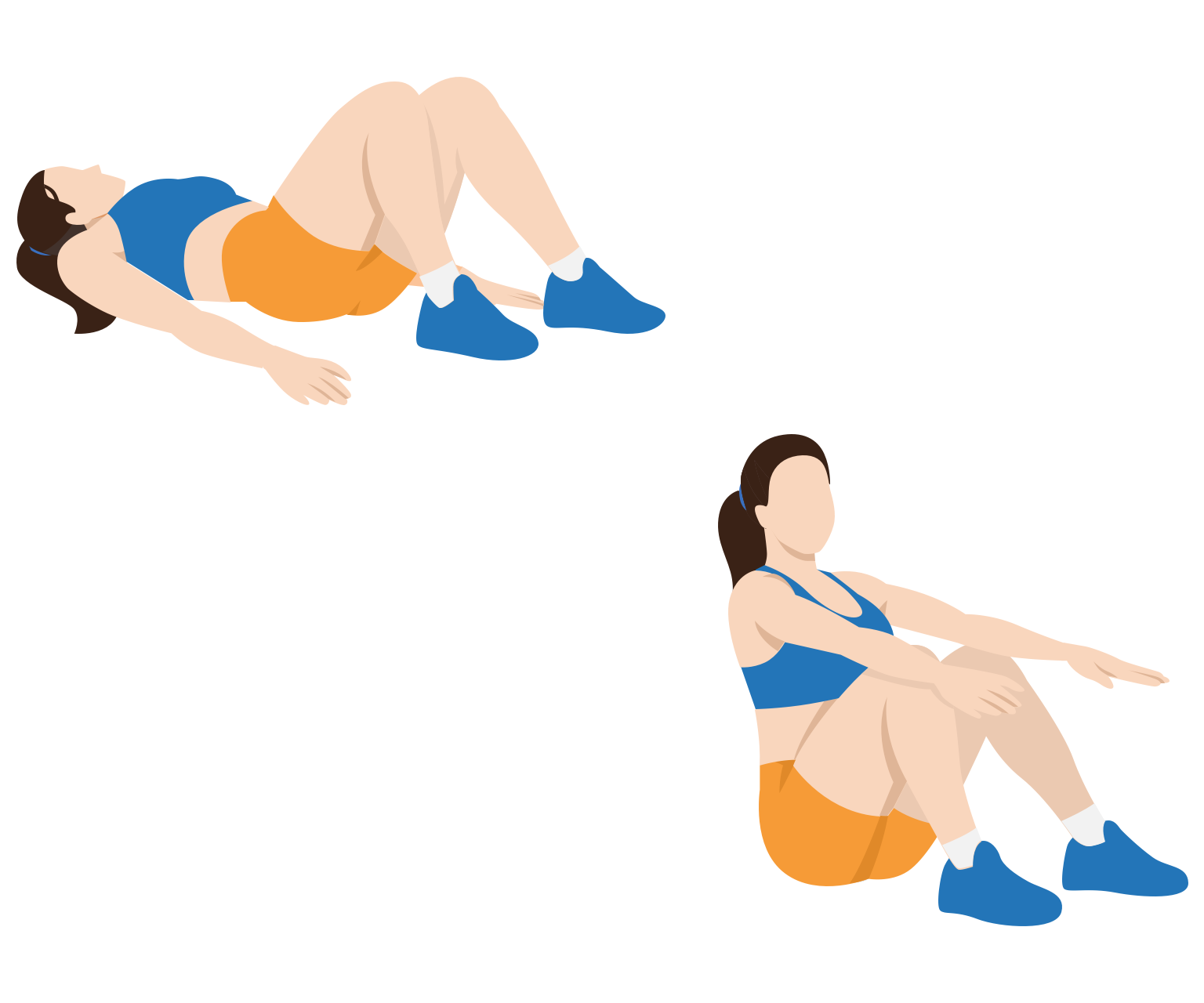
Sit ups engage your entire core, including your lower back muscles and hip flexors. This provides a balanced and comprehensive workout. Sit ups don't need any equipment and is an easy-to-learn exercise, so this makes it accessible to almost everyone.
How to do
- Lie with your back flat on the floor. Your knees should be bent, with your feet flat on the ground.
- Place your hands behind your head, or cross them over your chest.
- Engaging your core, pull your torso up towards your thighs, fully lifting your shoulders off the floor. Keep your neck relaxed through the movement.
- Now, lower yourself back to the starting position.
- Repeat for the desired number of reps.
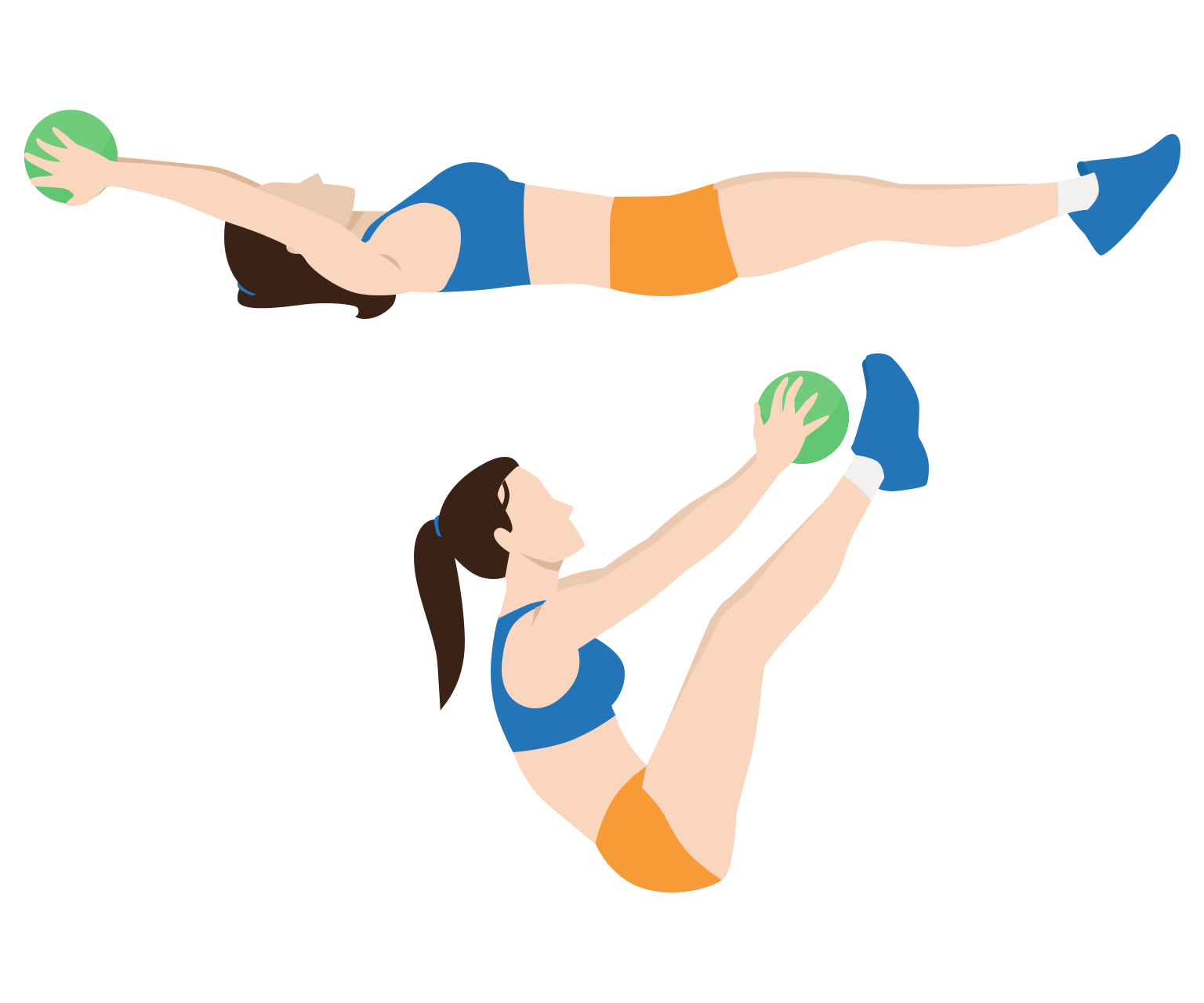
The V-up sees you raise both your upper body and legs, meaning it targets both your upper and lower abs at the same time. V-ups are more challenging than crunches or leg raises, but provide a comprehensive workout for your abs.
Your hip flexors are also engaged during the exercise, but to a lesser extent.
You can also perform this exercise with a medicine ball for an additional challenge.
How to do
- Lie flat on your back on an exercise mat.
- Extend your arms behind your back and keep your legs straight.
- In a single motion, lift your legs and upper body off the floor while trying to touch your toes. Keep your legs and arms as straight as possible.
- Lower your upper body and legs back to the starting position.
- Repeat for the desired number of reps.
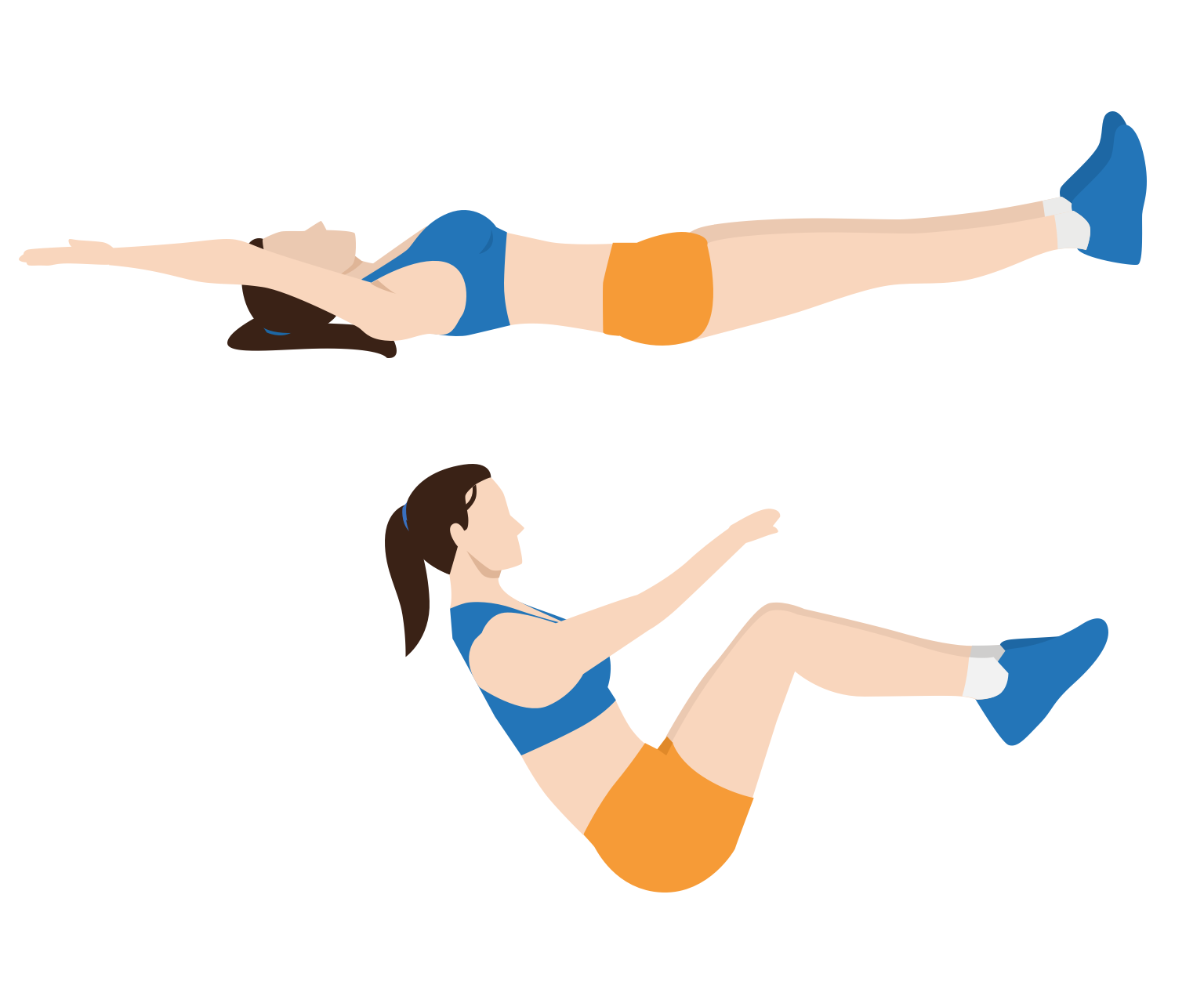
The V-sit primarily targets your abdominal muscles, specifically the rectus abdominis and the obliques. It also engages your hip flexors and lower back muscles to a lesser extent. V-sits are suitable for people at an intermediate to advanced level of fitness. They require a certain degree of core strength, flexibility and balance to perform correctly.
How to do
- Sit on a mat with your legs extended in front of you.
- Lean back slightly and lift your legs off the ground. Your legs should be bent at the knees.
- Engaging your core, pull your knees towards your chest while lifting your upper body towards your knees. Try to form a "V" shape with your body.
- Hold for a moment, then slowly lower back to the starting position.
Other exercises
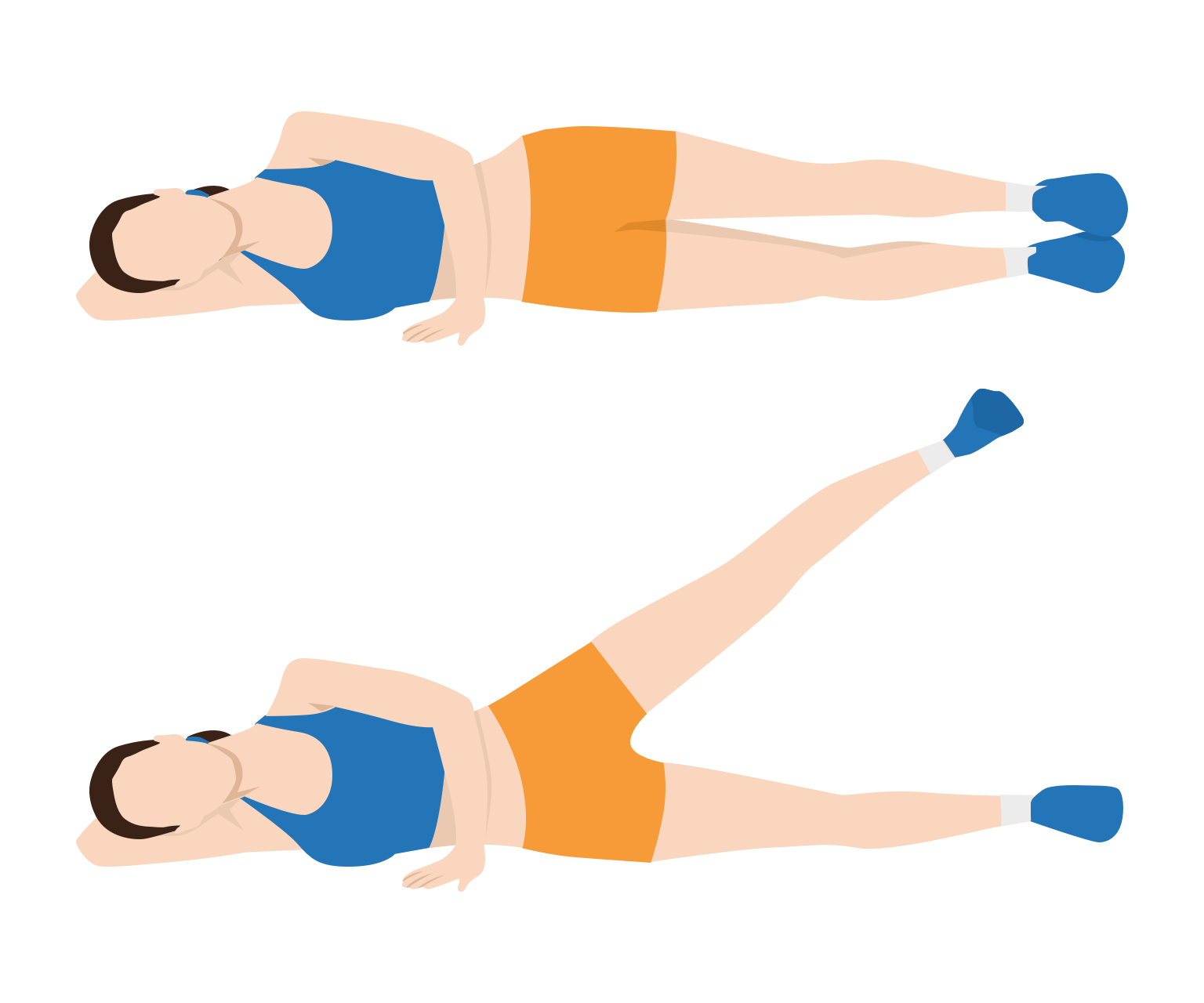
Side Leg Lifts engage not only your core, but also your hips, thighs, and glutes. This makes it a more comprehensive lower body exercise.
How to do
- Lie down on one side on an exercise mat. Support your head with your arm closest to the floor, and place your other arm across your core, with your hand planted on the floor.
- Stack one foot atop the other.
- Engaging your core, raise your leg up into the air. Keep your leg straight, ensuring you do not lean to one side or the other.
- Now, slowly lower your leg back to the starting position and repeat for the desired number of reps.
About abs and core exercises
Here's our list of 31 abs and core exercises, designed to strengthen and tone your abs. The exercises range from static holds, like the plank, to dynamic movements like bicycle crunches, V-ups and leg raises.
Most abs exercises can be done with an exercise mat, although it's useful to have a stability ball and medicine ball on hand. The hanging leg raises will also need a pull-up bar.
Our list is sorted by popularity from most popular to least popular, based on how many times each exercise is viewed on the web.
Abs muscles
The abs and core exercises in this guide work 4 muscle groups. The primary target is your rectus abdominis and the external and internal obliques. Secondary muscles include your hip flexors and erector spinae.
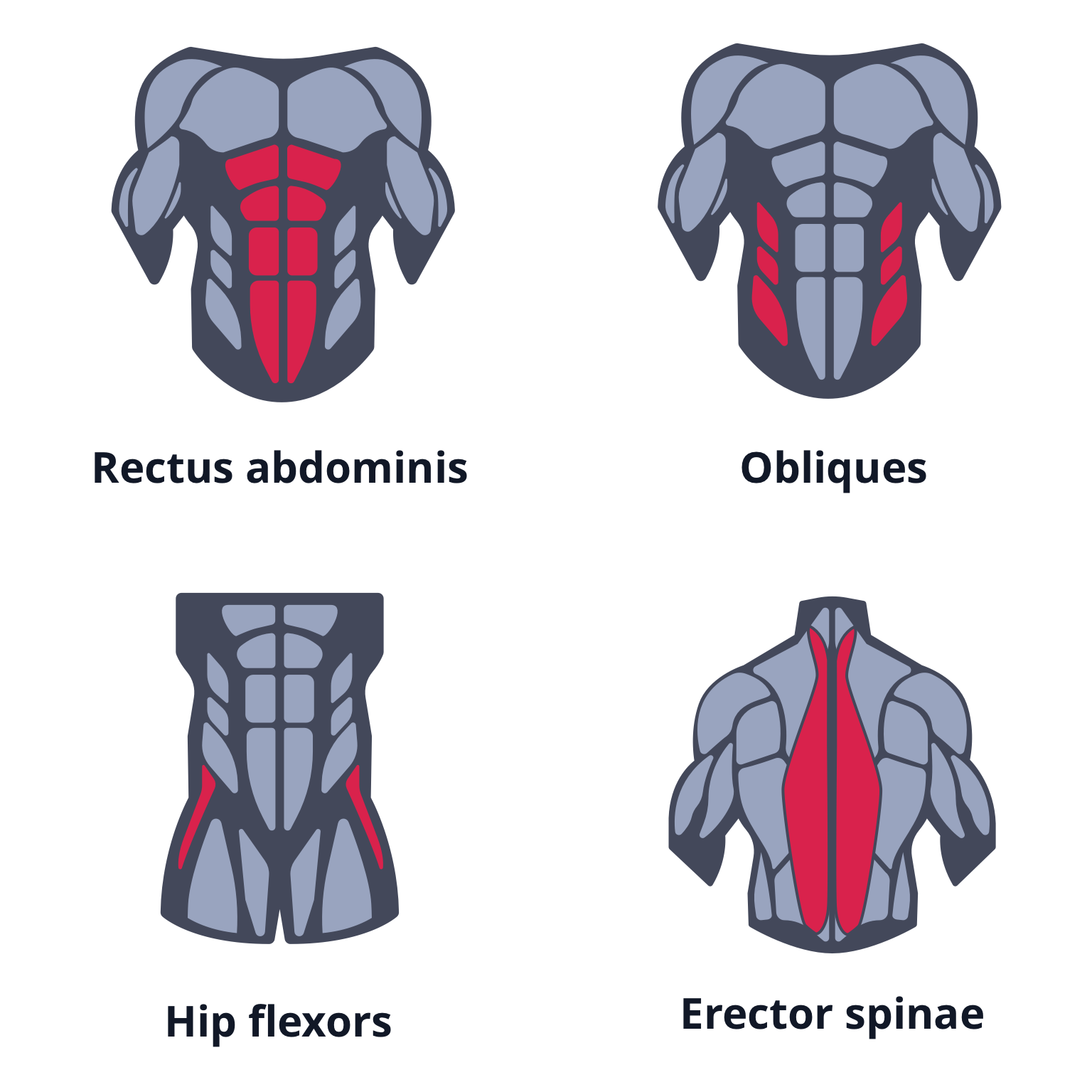
- Rectus abdominis - This is the big muscle that extends along the front of your abdomen. It's known as the "six-pack" muscle because, when toned, it appears to have a segmented appearance. Your abs are responsible for flexing your spine by connecting you to your ribs. It's the key muscle engaged when doing crutches.
- Obliques - The obliques are located on either side of your rectus abdominis. The external oblique is on the front of your abdomen, with the internal oblique lying beneath it. The obliques help you rotate your trunk and flex your spine from side to side. Exercises like bicycle crunches and side planks specifically engage your obliques.
- Hip flexors - Your hip flexors help to flex your hips and are key muscles in exercises like leg raises and V-ups.
- Erector spinae - This group of muscles runs along your back from your hips to your head. They help you maintain posture and are particularly engaged in exercises like the plank.
Changelog
- 19 June 2014 - Abs and core exercises guide first published by the Gym Geek team. Added 10 types of exercise.
- 4 Jan 2023 - Content update by Jane Litfin. Removed video from page.
- 15 February 2024 - Substantial content update by Jane Litfin. Added total of 31 abs and core exercises, including custom illustrations and how-to guides. Added more information about the muscles worked by abs exercises (rectus abdominis, obliques, etc).
- 9 January 2025 - Substantial content update by Jane Litfin. Introduced a more user-friendly layout. Grouped exercises into categories to make it easier to navigate around the 31 exercises. Moved the exercise guides to the very top of the page.

